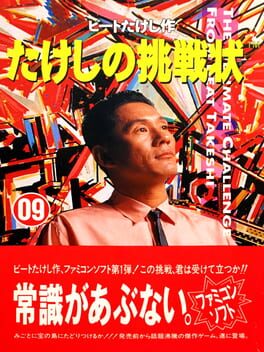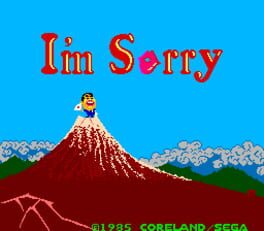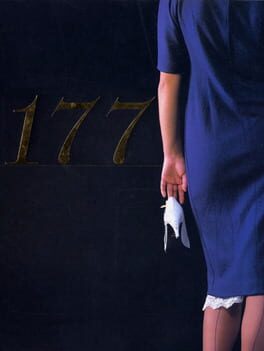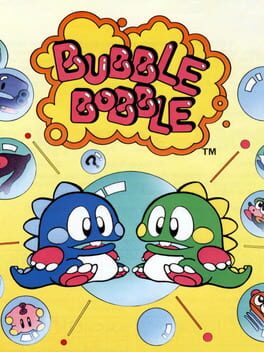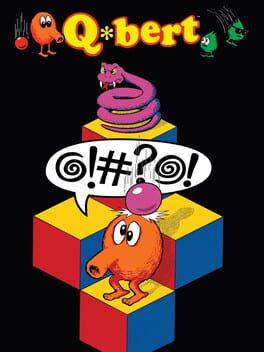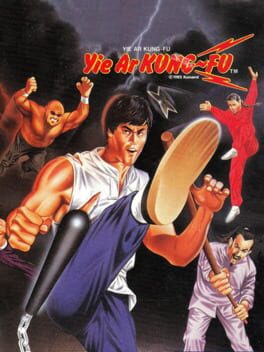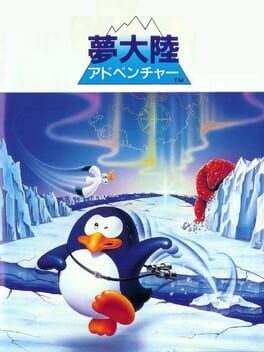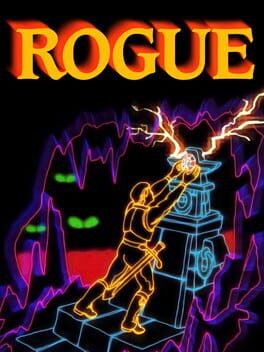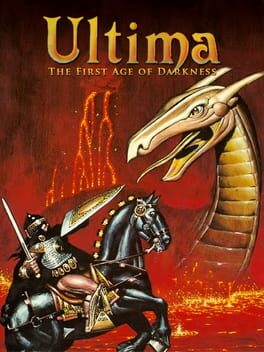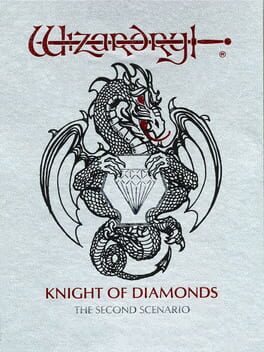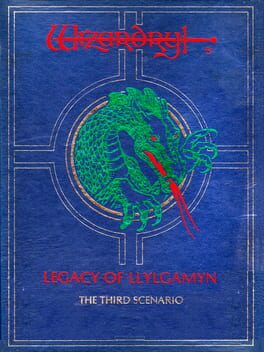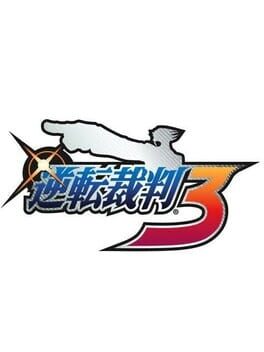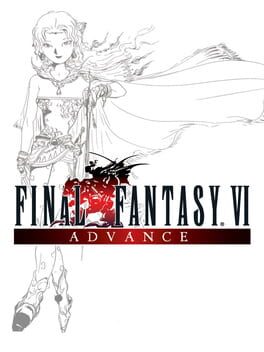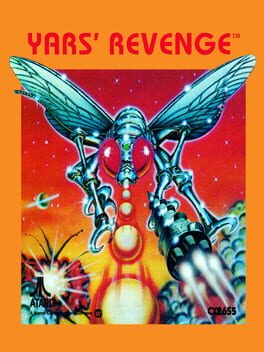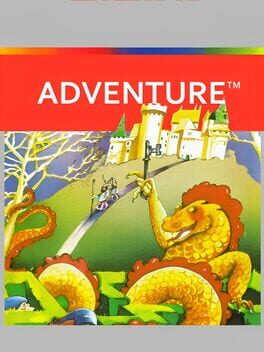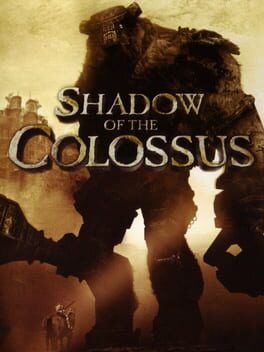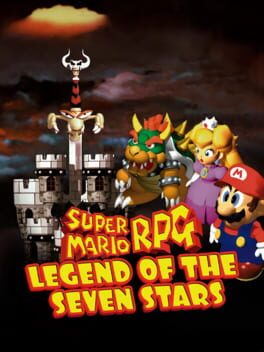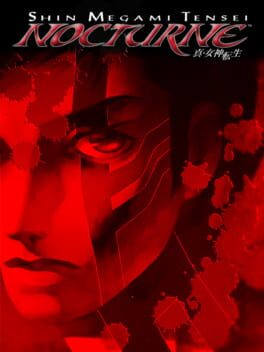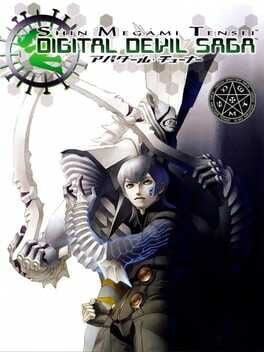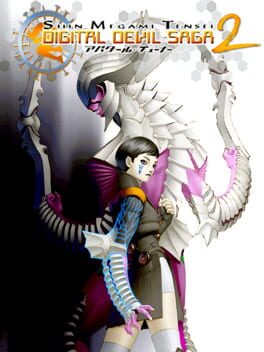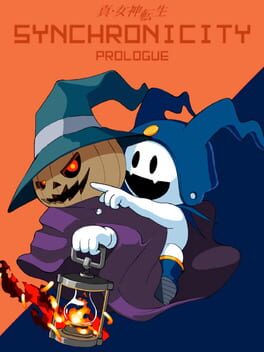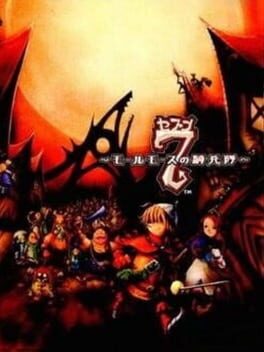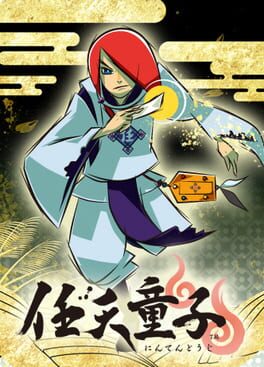ReadOnlyMuseum
3 reviews liked by ReadOnlyMuseum
More people have walked on the moon than have beat Takeshi’s Castle [1986-1990], the TV game show which involved about 100 people attempting to win every single episode, for 131 episodes. Rumor has it that this game show was directly inspired by Super Mario Bros [1985], which I cannot find a reliable and direct source for, but which seems extremely plausible just from looking at how the show works. It’s all physical challenges of the kind Mario faces all the time, jumping over walls, swinging on ropes, clearing gaps, et cetera. (Because it was an international success in export, it was the show responsible for the anglophone world’s idea of a generic wacky madcap Japanese game show and may or may not have either originated or codified and popularized the concept, though the fad it began seems to have ended in Japan around the 2000s, while its influence kept percolating elsewhere around the world in shows like Wipeout [2008-2014/2021-2022].) The hundred contestants must get through this obstacle course without failing once or they will be disqualified, showing a conceptualization of the lives system not as like, the same Mario across alternate timelines, but as separate individuals making their own attempts, slowly filtering out until statistically someone is finally good or lucky enough to succeed against these obstacles which are extremely difficult but not quite impossible.
I see it said a lot, as basically a truism, that most or all video games are a “power fantasy.” I’ve been thinking about it and I very much disagree. There are surprisingly few games that offer up little-to-no resistance to the player enacting their will and therefore having maximal power over the game world. Rather, conventional game design is always throwing caltrops and obstacles and restrictions in front of the player. They are disempowerment fantasies, offering surmountable challenges to stimulate the player like a predator in a zoo hunting a pumpkin full of ground beef.
In Super Mario Bros, Bowser is the level designer. Takeshi Kitano cast himself as Bowser, as the villain, the bad guy in the castle. Takeshi Kitano played a lot of bad guys in movies in the 1980s (a serial killer, a cult leader, hitmen,) as his way of bucking against the unhappy confines of his newfound celebrity as a comedian and fairly ubiquitous TV light entertainment presenter type and establish himself as a serious artist, though this strategy of his would only pay off for him in the 1990s. In Takeshi’s Castle, the oppositional relationship between hero and villain is all just transparent kayfabe, it’s just for fun and really for the benefit of the hero. Really, it’s the obstacle course itself that gets to be the star of Takeshi’s Castle, it simply has more screentime than Takeshi, his castle, or any given contestant or cast member. Each anonymous contestant primarily expresses and defines their on-screen character through their relationships to the castle and how each unique approach contrasts with the ones we’ve already seen. They’re always reacting.
There’s 2 different stories of how Takeshi Kitano came by his showbiz success. There’s the short version, where it was all a fluke and he was incidentally working as a busboy and then got thrust up on stage, and the longer less-abridged version where he dedicates himself to a career in comedy through hard work and apprenticeship, deliberately working as a busboy in a particular circumstance in order to create his own luck. These stories are technically not contradictory, but they paint very different pictures and accordingly get deployed in different rhetorical circumstances. This slipperiness of mythology both allows the public character of Takeshi Kitano to be different things as the situation demands, and also suits his brand of being a multifaceted chameleon and jack-of-all-trades. It does make my life hard, though, because I’m not a very good researcher and can’t read Japanese, so the most I can do is skeptically position rumors and legends. As best as I can tell, Takeshi Kitano has written at least four autobiographies, none of which have been translated to English and most of which seem to focus on his life before fame, with various spins, such as Takeshi-Kun, Ha! [1985], which is a lighthearted children’s book about getting up to kiddie hi-jinks, or Akasuka Kid [1988], the aforementioned long version of his rise-to-fame tale, both of which got adapted to TV miniseries.
Takeshi Kitano got that start in showbiz as a “manzai” comedian in the 1970s, in the group The Two Beats (hence his nickname Beat Takeshi.) Manzai is a kind of stand-up comedy with two comedians, a funny guy and a straight man ala Abbot and Costello or a vaudeville routine or a Socratic dialogue. Usually in this sort of set-up, both participants get punchlines one way or another, but not in The Two Beats. Beat Takeshi’s routine was to be a verbal steamroller, going up there and essentially doing a solo stand-up set where he took all the punchlines and happened to be standing next to another guy. Beat Kiyoshi could never get much of a word in edgewise against Beat Takeshi’s rapid-fire onslaught of ridiculous statements, only eking out semantically-empty obvious statements as set-up, unacknowledged rhetorical questions, and ignored chastisements. He didn’t do nothing, though. He pulled big faces with bugged-out eyes, restlessly moving around from one foot to the other, getting increasingly frustrated, expressively playing the part of the audience like a horror game streamer with a facecam. He was always reacting.
The other important thing to note about The Two Beats for my purposes is that they were, reportedly, edgy. They needled society in some manner and rode controversy over their offensiveness to greater fame. 1986 was a big year for Beat Takeshi in that department, too. In December — right around the same time his video game was being released — a tabloid magazine called Friday published something about him having an affair with a college student. Angry, he got together with 11 members of his “Gundan” group of hangers-on and broke into their offices after hours to vandalize it, spray fire extinguishers around, and ultimately get arrested. It’s not clear to me if he did actual jail time for this or just got banned from TV, but regardless, they made episodes of Takeshi’s Castle with a big paper-mache Takeshi head for a while and then held a poll to see if they should bring him back that revealed that that after this whole scandal he was more popular than ever. Takeshi Kitano has remained a prickly curmudgeon in interviews his whole life, someone with perhaps a slight conservative bent who doesn’t like modern society, its phoniness and its media and its technology… such as, famously, video games.
------ MUSICAL INTERMISSION: Killdozer - Hamburger Martyr [1986] -------
Takeshi’s Challenge [1986] was not actually made by Takeshi Kitano, though, despite the title and the way people talk about it. We humans like to think of artworks as having authors regardless of how accurate a proposition that is or isn’t, largely in my view as a way of anthropomorphizing artworks because it’s awkward to speak or even think of inert objects as having intentions and acting on the world. The authorship function here is being absorbed by the celebrity tie-in branding; we want to believe that Takeshi left his fingerprints on the work as the driving auteur. The concept of the celebrity auteur game designer, contrary to belief that it is a recent development, was already well-established by 1986 and Beat Takeshi is being slotted into that archetype.
The legend goes that Kitano found out there was to be a licensed game based on himself, injected himself into the process, got super drunk over one long night, came up with all the ideas for the whole game, and the programmers dutifully took notes on every ridiculous thing he said and tried their darndest to implement it all. The original public source for this tale is the first episode of GameCenter CX [2003-2022], where it is a rumor proffered by an employee who was entirely unrelated to producing Takeshi’s Challenge, and he does say it was multiple nights unless that was a translation error. I also have heard second-hand that Takeshi himself claims to have done it over one dinner but stone-cold sober, though I don’t know the source for that claim at all. Indeed, I can’t surface any instance of Takeshi Kitano talking about this game ever at all, at least in English. I can’t even find direct support for the commonly-circulated claim that he hates video games (which I deployed right before the musical intermission,) which seems to be a key part of this whole creation myth, but which sits weirdly up against the keen-eyed enthusiasm with the novelty of Super Mario Bros implied by the design of Takeshi’s Castle. Although I did find him saying “I hate anime, and Hayao Miyazaki most of all,” for whatever that’s worth to you.
Implementation of ideas does not simply happen, and details that Takeshi Kitano could scarcely have come up with himself over dinner matter. Takeshi’s Challenge is obviously not the work of a first-time outsider to the video game form taking their first swing at it. The bulk of the game was actually made by anonymous designers and programmers at Taito, the company that brought us Space Invaders [1978] and a gaggle of other acclaimed classics clear up through and beyond 1986. It is professionally crafted, with no more in the way of bugs than Super Mario Bros, and its design shows a fairly sophisticated knowledge of video gaming as it has hitherto existed in the 80s. My best guess is that Takeshi came up with some broad strokes and the most off-the-wall bits, and the rest was made by a team that knew video games well and realized the most suitable schema at-hand in which to coherently contain those ideas was the adventure game.
A good point of comparison for Takeshi’s Challenge is The Hitchhiker’s Guide To The Galaxy [1984]. They’re both high-profile collaborations with a creative celebrity author figure and industry insiders. They’re both adventure games with a notably open structure that find their own heightened and frustrating obtuseness fun and funny. They keep the punchlines to themselves but invite the player to be the frustrated comedy partner reacting to their onslaught of nonsense.
However, Hitchhiker’s is made with love for adventure games… while Takeshi’s Challenge seems to boil with something like hatred for the player, itself, and games that resemble itself. Takeshi’s Challenge is a cornerstone example in the world of “bad games.” It fits strangely in with its companions, because most infamous bad games get that regard through some kind of failure of implementation. Takeshi’s Challenge, by contrast, is an unambigious unqualified success on its own terms. It’s just that those terms are alien, grotesque, and hostile. It’s tweaking the nose of video games as an established medium, riffing on conventions, and its understanding of what it thinks “normal” video games are can be partially reverse-engineered. It is a funhouse mirror portrait of a genre I hold dear in a diseased, deranged, and almost necrotic state. It is an indictment.
Let’s review a history of adventure games in Japan. It starts with Mystery House [1980] because the focus on big pictures and minimal text made it easier to translate. (More specifically, it starts with a Japanese clone called Mystery House 1 [1982].) This is unfortunate, because Mystery House is a terrible game. Its parser is lousy, its world and story is incoherent, and half of the things the player does don’t really make sense even after you do them, nevermind reasoning things out beforehand! It’s hard to imagine that translating to another language improves this condition.
By the time we get to The Portopia Serial Murder Case [1983/1985], the manual explicitly and directly tells the player that they are going to have to systematically brute force solutions to progress sometimes. This is plainly just the expectation people have for how these types of games work, and it’s certainly not exclusive to Japan. It’s not brute force 100% of the time, but often in Portopia you gotta do everything you can everywhere you can do it, and then do it AGAIN multiple times in case you need to do it multiple times for it to have any effect at all, and AGAIN every time you accomplish anything on the off chance it might have silently advanced the game state one tick forward. Or sometimes, when you don’t have any reason to think you’ve accomplished anything because there’s no feedback. Slowly, you gather information and produce an idea of the optimal run through, learning from failures as late as the last frame of the game and gladly reloading from scratch. “Save scumming” is fully expected. You don’t just need to learn to play like this, you need to learn to LIKE doing this.
There’s a shift away from this sort of design for large games just now beginning in the late 80s, with Japanese adventure games in particular just about to take as hard a pivot away from this sort of thing as can be imagined. I believe this creates for the moment a bit of a generation gap between the adult designers of games for the Famicom/NES and their still-in-childhood players, leaving this an era of transitional pubescence that means the likes of Castlevania 2: Simon’s Quest [1987], a game that strongly resembles Takeshi’s Challenge at least on a surface level, will not “age well”. (Sarcastic quote marks because I hate that thinking.) But it’s this design paradigm that Takeshi’s Challenge sees and extends to absurd lengths.
There’s actually a rocky escalation from a pretty normal baseline of confusion to batshit bullshit. A good example of reasonably-traditional design of an adventure game puzzle is the one involving the shamisen (a Japanese musical instrument kinda like a banjo.) Towards the end of the game, once you’ve passed through two and a half one-way gates that you need to optimize your run around, you need to play the shamisen to convince someone not to kill you. You’re given 5 choices and that’s the only one that works. It also requires a two-step process in the early game to get and learn to use, which makes it look more signifigant for appearing in two menus, but then again, all of that also goes for the shakuhachi (a Japanese musical instrument kinda like a flute,) but then again, you can bring both and reload to try them one after the other. It’s still trial-and-error where you have to return back to the beginning if you’re not luckily prepared for, but it’s not total guesswork because you have an enumerated list of everything to try. This stuff isn’t a nose-tweak, it’s just normal game stuff.
It’s not just the shakuhachi, this game is actually mostly red herring by weight. The first half of the game is the part that often gets it comparisons to the 3D Grand Theft Autos, because what you do is wander aimlessly and behave more badly than you could get away with in real life though the down-to-earth setting of urban city that serves as a comedic foil for jokey signs, vulgar people, and comically incongruous but extremely video gamey violence with gangsters and cops. There’s tons of things to do and places to be, but most of it is completely irrelevant to the critical path and exists for flavor, like the candy store or barber shop. They exist seemingly mainly for the sake of their own existence, to flesh things out into a better approximation of a real city center. They also mean that you can play Takeshi’s Challenge just by poking around and existing in its space for a while instead of doing anything to progress.
But there is a plot to this game, a narrow path to follow to the end of the game. At the beginning, your boss is chewing you out for not performing well at your job, and you are absolutely not on a mission to perform better as a salaryman. While technically you shouldn’t quit right away for optimization reasons, the whole game to follow has big “freshly unemployed and at loose ends” energy. To progress, the player character has to become a complete derelict, divorcing his wife and closing out his bank account and quitting his job and leaving his kids behind, and a loud drunken hooligan regularly making such an ass of himself that he incites bar brawls. At least he pays his alimony and gets himself some adult education at the culture center. Otherwise, you’re consistently encouraged to command him to act anti-socially. There’s literally no mechanical reason not to set his speech to “threatening” at all times because that’s how you get most of the in-game hints. Binge-drinking tequila heals his. It’s progression-vital to impotently wail at pachinko to annoy people and thereby attract them in to kill ’em and steal their stuff, like a siren but more pathetic.
Unless there’s something in the manual (which is likely,) it’s only the two-time reoccurence of a treasure map in the bookstore and pachinko parlor menus that clues you in to your eventual goal. Getting this map is where the game really shows its teeth for the first time. I’ll fully outline the process: You have to do karaoke, but if you try, you are told that the machine is broken. You’re not to fix it, though. You are to do the causally unrelated action of getting a little drunk off two drinks at the bar before you will be invited to do karaoke. Then, you need to select one of five particular possible songs. You can figure out which song it is by talking to random people anywhere in town, and they’ll sing it. But not only do you need to pick the song, you need to nail it. In real life, to the game’s satisfaction. You have to sing it into the Famicom microphone on the controller, and even the microphone-free alternative which seems like a debugging tool is finicky. But not only do you need to nail the song, you need to nail it three times in a row. Nothing at all suggests this course of behavior, just sheer bloody-minded determination about how this song seems significant. Once you do that, you’ll summon a bunch of yakuza to beat down. Do that and an old man with a robe and long mustache will give you a treasure map that is blank. You have a few options for what to do with it, and some options instantly fail. Oh, and by the way, when you do fail at revealing the treasure map, the earliest you can rewind to with the password save system brings you all the way back to the very beginning of this sequence to do it all over again. But it’s not as simple as just trying every option. You also have to wait. There’s two viable options: #1, you can soak the paper in water, wait more than 5 minutes but less than 10, then shout at it through the microphone to clear it up. How are you supposed to figure out the timing without a guide? Why does shouting at paper dry it up? Beats me. You just gotta be psychic. Or, #2, you have to expose it to the sun and then wait a real-life hour without touching the controller. Your only hint to do this is that you don’t immediately fail, but if you press any button, at which point you get a failure message where the old man chastises you for wasting your chance. Same thing happens if you choose to merely stare at the map, but without the possibility of success. Once you have revealed the treasure map, you must kill the old man who gave it to you, otherwise he will show up at the very end of the game having used the map to beat you to the treasure. I’ve seen that part get flack, but it’s honestly the easiest thing to figure out what to do next about out of this whole entire sequence.
That’s not a fucking puzzle! That’s absolute god damn nonsense! It’s not even something you can brute force, it’s just so open-ended and arbitrary! I’m not even sure how the person who figured out that’s what you have to do and passed it down to us figured it out. And yet… and yet… go read a strategy guide for Tower Of Druaga [1984] or read the way Jason Dyer beat Time Zone [1982]. This sort of rigamarole was barely exaggerating the way games around it actually were, and Takeshi’s Challenge thinks that’s miserable and ridiculous. Takeshi’s Challenge isn’t setting up quite-difficult-but-surmountable challenges, it quite seriously wants you to not to persist but to give up and stop playing. When you beat it, a tiny little floating Takeshi Kitano head tells you:
"YOU ACTUALLY BOTHERED TO FINISH THIS CRAPPY GAME? SUCKER. DON'T TAKE IT SO SERIOUSLY."
And it’s snotty, but he’s right. If you played this game without a guide it must have been a full-time job for you. Even with a guide it’s many stupid hours. Getting the map’s not even the hardest part of the game, it’s just the bottleneck. There’s the infamous hang-gliding, where you have to dodge and shoot birds while not being able to move up for 2 and a half minutes. It’s not actually that hard — it’s an easier side-scrolling shooter section than Gradius [1985] or Taito’s own Darius [1987]. But it’s a totally different kind of game difficulty, going from a test of persistence to one of reflexes. I suppose that’s what makes it Takeshi’s Challenge and not Takeshi’s Patience Test. It’s almost a tautology that any hard swap from one mode of gameplay to another is a sudden switch-up of required player skills, and you’re going to filter out players who are good at the main mode of gameplay and not the other type. Here that’s exactly what Takeshi’s Challenge wants, but other developers who do this will think they’ll somehow attract both types of players by doing it. Believe me, this kind of thing is gonna be all over the likes of Manhunter: New York [1988].
The grand finale manages to ESCALATE on the level of inscrutability of the map quest. You have to essentially comb through 3 large caves pixel hunting for random completely unsignalled hotspots and then duck there to get to the next lower level. While you do that, you’re gonna be constantly swarmed by beasties. This part is even more Tower Of Druaga. It’s undoubtedly expected that you use a guide or some other community resource to get through here, but either somebody has to have actually done it the hard way at some point, unless the creators themselves told people how to do it. Famously, though this doesn’t tell us about how it was made one way or the other, the original strategy guide for this game was incomplete and had to be republished.
Here in the back half of the game, where you’re actually embarking on the treasure hunt, the game turns from a goofy version of daily life more and more into a video game-ass video game. You cross a threshold into a fantasyland, first passing through a brief waystation of tourist amenities that rub in the well-trod manicured artificiality of your journey and its destination. In fact, if you haven’t completely divested your player character of attachments and obligations to the everyday world, you will get forcibly dragged back into it and lose the game after the hang glider segment. The plot to this game is actually itself a bit of an allegory for turning your back on real life to disappear into a video game. You’re not just a derelict of your responsibilities and a piece of shit, but you’re doing it to go seek a place where platforming and violence and optimization actually matters, where there’s fake buried treasure to be found at the end of the rainbow.
Dedicating the only two buttons you get to “jump” and “attack” were, in the first half, essentially a diffuse joke about how those aren’t things that you do very often in real life but do constantly in a video game, where situations like being attacked by like 5 yakuza members and fighting them all off have to be transparently manufactured. Now, those once-odd manufactured situations are normalized to the point where you legitimately gotta use the trick where you despawn every enemy on screen by checking your inventory just to get by. You’re getting attacked by snakes and armadillos and monkeys dropping coconuts from above. You have to jump to get to places you need to be. All of a sudden, the game looks less like an adventure game and more like Adventure Island [1986]. The timeline works out such that it might literally be a parody of Adventure Island specifically, since both it and the back half of Takeshi’s Challenge both take place on fictional islands in the South Pacific.
One thing I’m downright shocked that I’ve never heard anyone say, probably because so few people make it very far into the end game, is that the back half of Takeshi’s Challenge is obviously racist. On the tourist island, the hostile mobs you learn to recognize as inherently violent on sight aren’t wearing blue-and-green costumes but instead are the only ones in the whole game that are brown-skinned. The island with the treasure is heartily littered with classic ooga-booga tribal caricatures: bones in the noses, big cannibal cooking pot, grass skirts, the works. This is extremely well-trod territory for games in the 1980s, to the point where it’s basically luck I haven’t run into quite so blatant an act of racist caricature yet. It even threatened to show up in A Mind Forever Voyaging [1985], where it doesn’t reasonably belong at all! And no, I don’t think it’s part of the parody and satire here, not that that would be an excuse but it would be something. It’s not particularly heightened or subverted or critiqued, it’s just there. Like the shamisen puzzle and such, it’s played exactly as straight and thoughtlessly as you’d find in a normal game. But just because it doesn’t mean to doesn’t mean it doesn’t still damn the grotesque ugliness of things common in video games by making itself the ugliest version.
It’s a common and intuitive thing to marry the common treasure-hunt gameplay with the classic treasure-hunt theming and plot. When we enter the back half our salaryman character even dresses up with a classic ’40s pike hat outfit just so you really know how traditionally colonialist this is about to get. You are here to steal the natives’ treasure to claim it as your own. To do so, you must first impress their spiritual and political leaders with worthless trinkets and stupid tricks in exchange for their holy item. Colonialism is such a common thing that gets circled around that I ran out of fresh things to say about how bad I think it is the last time I wrote about an infamous bad game.
So here’s the too-cute counter-reading for this one: the first half of the game is actually the more colonialist one. You, the player, are colonizing the salaryman character’s life. He’s not a blank slate, he’s got a whole life with a career and savings and a wife and kids. And then you possess him, like a demon. You destroy every way that he relates to his community: his family, his career that may give him purpose and a sense of structure and role, you even destroy pro-social behavioral norms in general. You map out his whole society and determine for him what’s worthless (books, candy, flowers, personal grooming) and what’s not (like drinking.) You plunder his life for all it’s worth, liquidating all his hard-earned assets for maximum short-term extraction, and then set him down the path of getting even more money far beyond what’s useful for him. It’s significant that the player character is a salaryman at a loan office, because the whole plot ultimately comes down not to video game metacommentary but to greed, a bottomless greed that ultimately consumes and destroys all other possible meaning there is to be found in life.
(Originally posted on my blog, Arcade Idea. I was wary to do this sort of cross-posting, because my critical style is orthogonal to the star ratings and I always feel weird about anything that smacks of self-promotion. I think some of the people I like to read here would like this, though. If my anxieties are founded and this sort of thing is not welcome here on Backloggd, please let me know!)
I see it said a lot, as basically a truism, that most or all video games are a “power fantasy.” I’ve been thinking about it and I very much disagree. There are surprisingly few games that offer up little-to-no resistance to the player enacting their will and therefore having maximal power over the game world. Rather, conventional game design is always throwing caltrops and obstacles and restrictions in front of the player. They are disempowerment fantasies, offering surmountable challenges to stimulate the player like a predator in a zoo hunting a pumpkin full of ground beef.
In Super Mario Bros, Bowser is the level designer. Takeshi Kitano cast himself as Bowser, as the villain, the bad guy in the castle. Takeshi Kitano played a lot of bad guys in movies in the 1980s (a serial killer, a cult leader, hitmen,) as his way of bucking against the unhappy confines of his newfound celebrity as a comedian and fairly ubiquitous TV light entertainment presenter type and establish himself as a serious artist, though this strategy of his would only pay off for him in the 1990s. In Takeshi’s Castle, the oppositional relationship between hero and villain is all just transparent kayfabe, it’s just for fun and really for the benefit of the hero. Really, it’s the obstacle course itself that gets to be the star of Takeshi’s Castle, it simply has more screentime than Takeshi, his castle, or any given contestant or cast member. Each anonymous contestant primarily expresses and defines their on-screen character through their relationships to the castle and how each unique approach contrasts with the ones we’ve already seen. They’re always reacting.
There’s 2 different stories of how Takeshi Kitano came by his showbiz success. There’s the short version, where it was all a fluke and he was incidentally working as a busboy and then got thrust up on stage, and the longer less-abridged version where he dedicates himself to a career in comedy through hard work and apprenticeship, deliberately working as a busboy in a particular circumstance in order to create his own luck. These stories are technically not contradictory, but they paint very different pictures and accordingly get deployed in different rhetorical circumstances. This slipperiness of mythology both allows the public character of Takeshi Kitano to be different things as the situation demands, and also suits his brand of being a multifaceted chameleon and jack-of-all-trades. It does make my life hard, though, because I’m not a very good researcher and can’t read Japanese, so the most I can do is skeptically position rumors and legends. As best as I can tell, Takeshi Kitano has written at least four autobiographies, none of which have been translated to English and most of which seem to focus on his life before fame, with various spins, such as Takeshi-Kun, Ha! [1985], which is a lighthearted children’s book about getting up to kiddie hi-jinks, or Akasuka Kid [1988], the aforementioned long version of his rise-to-fame tale, both of which got adapted to TV miniseries.
Takeshi Kitano got that start in showbiz as a “manzai” comedian in the 1970s, in the group The Two Beats (hence his nickname Beat Takeshi.) Manzai is a kind of stand-up comedy with two comedians, a funny guy and a straight man ala Abbot and Costello or a vaudeville routine or a Socratic dialogue. Usually in this sort of set-up, both participants get punchlines one way or another, but not in The Two Beats. Beat Takeshi’s routine was to be a verbal steamroller, going up there and essentially doing a solo stand-up set where he took all the punchlines and happened to be standing next to another guy. Beat Kiyoshi could never get much of a word in edgewise against Beat Takeshi’s rapid-fire onslaught of ridiculous statements, only eking out semantically-empty obvious statements as set-up, unacknowledged rhetorical questions, and ignored chastisements. He didn’t do nothing, though. He pulled big faces with bugged-out eyes, restlessly moving around from one foot to the other, getting increasingly frustrated, expressively playing the part of the audience like a horror game streamer with a facecam. He was always reacting.
The other important thing to note about The Two Beats for my purposes is that they were, reportedly, edgy. They needled society in some manner and rode controversy over their offensiveness to greater fame. 1986 was a big year for Beat Takeshi in that department, too. In December — right around the same time his video game was being released — a tabloid magazine called Friday published something about him having an affair with a college student. Angry, he got together with 11 members of his “Gundan” group of hangers-on and broke into their offices after hours to vandalize it, spray fire extinguishers around, and ultimately get arrested. It’s not clear to me if he did actual jail time for this or just got banned from TV, but regardless, they made episodes of Takeshi’s Castle with a big paper-mache Takeshi head for a while and then held a poll to see if they should bring him back that revealed that that after this whole scandal he was more popular than ever. Takeshi Kitano has remained a prickly curmudgeon in interviews his whole life, someone with perhaps a slight conservative bent who doesn’t like modern society, its phoniness and its media and its technology… such as, famously, video games.
------ MUSICAL INTERMISSION: Killdozer - Hamburger Martyr [1986] -------
Takeshi’s Challenge [1986] was not actually made by Takeshi Kitano, though, despite the title and the way people talk about it. We humans like to think of artworks as having authors regardless of how accurate a proposition that is or isn’t, largely in my view as a way of anthropomorphizing artworks because it’s awkward to speak or even think of inert objects as having intentions and acting on the world. The authorship function here is being absorbed by the celebrity tie-in branding; we want to believe that Takeshi left his fingerprints on the work as the driving auteur. The concept of the celebrity auteur game designer, contrary to belief that it is a recent development, was already well-established by 1986 and Beat Takeshi is being slotted into that archetype.
The legend goes that Kitano found out there was to be a licensed game based on himself, injected himself into the process, got super drunk over one long night, came up with all the ideas for the whole game, and the programmers dutifully took notes on every ridiculous thing he said and tried their darndest to implement it all. The original public source for this tale is the first episode of GameCenter CX [2003-2022], where it is a rumor proffered by an employee who was entirely unrelated to producing Takeshi’s Challenge, and he does say it was multiple nights unless that was a translation error. I also have heard second-hand that Takeshi himself claims to have done it over one dinner but stone-cold sober, though I don’t know the source for that claim at all. Indeed, I can’t surface any instance of Takeshi Kitano talking about this game ever at all, at least in English. I can’t even find direct support for the commonly-circulated claim that he hates video games (which I deployed right before the musical intermission,) which seems to be a key part of this whole creation myth, but which sits weirdly up against the keen-eyed enthusiasm with the novelty of Super Mario Bros implied by the design of Takeshi’s Castle. Although I did find him saying “I hate anime, and Hayao Miyazaki most of all,” for whatever that’s worth to you.
Implementation of ideas does not simply happen, and details that Takeshi Kitano could scarcely have come up with himself over dinner matter. Takeshi’s Challenge is obviously not the work of a first-time outsider to the video game form taking their first swing at it. The bulk of the game was actually made by anonymous designers and programmers at Taito, the company that brought us Space Invaders [1978] and a gaggle of other acclaimed classics clear up through and beyond 1986. It is professionally crafted, with no more in the way of bugs than Super Mario Bros, and its design shows a fairly sophisticated knowledge of video gaming as it has hitherto existed in the 80s. My best guess is that Takeshi came up with some broad strokes and the most off-the-wall bits, and the rest was made by a team that knew video games well and realized the most suitable schema at-hand in which to coherently contain those ideas was the adventure game.
A good point of comparison for Takeshi’s Challenge is The Hitchhiker’s Guide To The Galaxy [1984]. They’re both high-profile collaborations with a creative celebrity author figure and industry insiders. They’re both adventure games with a notably open structure that find their own heightened and frustrating obtuseness fun and funny. They keep the punchlines to themselves but invite the player to be the frustrated comedy partner reacting to their onslaught of nonsense.
However, Hitchhiker’s is made with love for adventure games… while Takeshi’s Challenge seems to boil with something like hatred for the player, itself, and games that resemble itself. Takeshi’s Challenge is a cornerstone example in the world of “bad games.” It fits strangely in with its companions, because most infamous bad games get that regard through some kind of failure of implementation. Takeshi’s Challenge, by contrast, is an unambigious unqualified success on its own terms. It’s just that those terms are alien, grotesque, and hostile. It’s tweaking the nose of video games as an established medium, riffing on conventions, and its understanding of what it thinks “normal” video games are can be partially reverse-engineered. It is a funhouse mirror portrait of a genre I hold dear in a diseased, deranged, and almost necrotic state. It is an indictment.
Let’s review a history of adventure games in Japan. It starts with Mystery House [1980] because the focus on big pictures and minimal text made it easier to translate. (More specifically, it starts with a Japanese clone called Mystery House 1 [1982].) This is unfortunate, because Mystery House is a terrible game. Its parser is lousy, its world and story is incoherent, and half of the things the player does don’t really make sense even after you do them, nevermind reasoning things out beforehand! It’s hard to imagine that translating to another language improves this condition.
By the time we get to The Portopia Serial Murder Case [1983/1985], the manual explicitly and directly tells the player that they are going to have to systematically brute force solutions to progress sometimes. This is plainly just the expectation people have for how these types of games work, and it’s certainly not exclusive to Japan. It’s not brute force 100% of the time, but often in Portopia you gotta do everything you can everywhere you can do it, and then do it AGAIN multiple times in case you need to do it multiple times for it to have any effect at all, and AGAIN every time you accomplish anything on the off chance it might have silently advanced the game state one tick forward. Or sometimes, when you don’t have any reason to think you’ve accomplished anything because there’s no feedback. Slowly, you gather information and produce an idea of the optimal run through, learning from failures as late as the last frame of the game and gladly reloading from scratch. “Save scumming” is fully expected. You don’t just need to learn to play like this, you need to learn to LIKE doing this.
There’s a shift away from this sort of design for large games just now beginning in the late 80s, with Japanese adventure games in particular just about to take as hard a pivot away from this sort of thing as can be imagined. I believe this creates for the moment a bit of a generation gap between the adult designers of games for the Famicom/NES and their still-in-childhood players, leaving this an era of transitional pubescence that means the likes of Castlevania 2: Simon’s Quest [1987], a game that strongly resembles Takeshi’s Challenge at least on a surface level, will not “age well”. (Sarcastic quote marks because I hate that thinking.) But it’s this design paradigm that Takeshi’s Challenge sees and extends to absurd lengths.
There’s actually a rocky escalation from a pretty normal baseline of confusion to batshit bullshit. A good example of reasonably-traditional design of an adventure game puzzle is the one involving the shamisen (a Japanese musical instrument kinda like a banjo.) Towards the end of the game, once you’ve passed through two and a half one-way gates that you need to optimize your run around, you need to play the shamisen to convince someone not to kill you. You’re given 5 choices and that’s the only one that works. It also requires a two-step process in the early game to get and learn to use, which makes it look more signifigant for appearing in two menus, but then again, all of that also goes for the shakuhachi (a Japanese musical instrument kinda like a flute,) but then again, you can bring both and reload to try them one after the other. It’s still trial-and-error where you have to return back to the beginning if you’re not luckily prepared for, but it’s not total guesswork because you have an enumerated list of everything to try. This stuff isn’t a nose-tweak, it’s just normal game stuff.
It’s not just the shakuhachi, this game is actually mostly red herring by weight. The first half of the game is the part that often gets it comparisons to the 3D Grand Theft Autos, because what you do is wander aimlessly and behave more badly than you could get away with in real life though the down-to-earth setting of urban city that serves as a comedic foil for jokey signs, vulgar people, and comically incongruous but extremely video gamey violence with gangsters and cops. There’s tons of things to do and places to be, but most of it is completely irrelevant to the critical path and exists for flavor, like the candy store or barber shop. They exist seemingly mainly for the sake of their own existence, to flesh things out into a better approximation of a real city center. They also mean that you can play Takeshi’s Challenge just by poking around and existing in its space for a while instead of doing anything to progress.
But there is a plot to this game, a narrow path to follow to the end of the game. At the beginning, your boss is chewing you out for not performing well at your job, and you are absolutely not on a mission to perform better as a salaryman. While technically you shouldn’t quit right away for optimization reasons, the whole game to follow has big “freshly unemployed and at loose ends” energy. To progress, the player character has to become a complete derelict, divorcing his wife and closing out his bank account and quitting his job and leaving his kids behind, and a loud drunken hooligan regularly making such an ass of himself that he incites bar brawls. At least he pays his alimony and gets himself some adult education at the culture center. Otherwise, you’re consistently encouraged to command him to act anti-socially. There’s literally no mechanical reason not to set his speech to “threatening” at all times because that’s how you get most of the in-game hints. Binge-drinking tequila heals his. It’s progression-vital to impotently wail at pachinko to annoy people and thereby attract them in to kill ’em and steal their stuff, like a siren but more pathetic.
Unless there’s something in the manual (which is likely,) it’s only the two-time reoccurence of a treasure map in the bookstore and pachinko parlor menus that clues you in to your eventual goal. Getting this map is where the game really shows its teeth for the first time. I’ll fully outline the process: You have to do karaoke, but if you try, you are told that the machine is broken. You’re not to fix it, though. You are to do the causally unrelated action of getting a little drunk off two drinks at the bar before you will be invited to do karaoke. Then, you need to select one of five particular possible songs. You can figure out which song it is by talking to random people anywhere in town, and they’ll sing it. But not only do you need to pick the song, you need to nail it. In real life, to the game’s satisfaction. You have to sing it into the Famicom microphone on the controller, and even the microphone-free alternative which seems like a debugging tool is finicky. But not only do you need to nail the song, you need to nail it three times in a row. Nothing at all suggests this course of behavior, just sheer bloody-minded determination about how this song seems significant. Once you do that, you’ll summon a bunch of yakuza to beat down. Do that and an old man with a robe and long mustache will give you a treasure map that is blank. You have a few options for what to do with it, and some options instantly fail. Oh, and by the way, when you do fail at revealing the treasure map, the earliest you can rewind to with the password save system brings you all the way back to the very beginning of this sequence to do it all over again. But it’s not as simple as just trying every option. You also have to wait. There’s two viable options: #1, you can soak the paper in water, wait more than 5 minutes but less than 10, then shout at it through the microphone to clear it up. How are you supposed to figure out the timing without a guide? Why does shouting at paper dry it up? Beats me. You just gotta be psychic. Or, #2, you have to expose it to the sun and then wait a real-life hour without touching the controller. Your only hint to do this is that you don’t immediately fail, but if you press any button, at which point you get a failure message where the old man chastises you for wasting your chance. Same thing happens if you choose to merely stare at the map, but without the possibility of success. Once you have revealed the treasure map, you must kill the old man who gave it to you, otherwise he will show up at the very end of the game having used the map to beat you to the treasure. I’ve seen that part get flack, but it’s honestly the easiest thing to figure out what to do next about out of this whole entire sequence.
That’s not a fucking puzzle! That’s absolute god damn nonsense! It’s not even something you can brute force, it’s just so open-ended and arbitrary! I’m not even sure how the person who figured out that’s what you have to do and passed it down to us figured it out. And yet… and yet… go read a strategy guide for Tower Of Druaga [1984] or read the way Jason Dyer beat Time Zone [1982]. This sort of rigamarole was barely exaggerating the way games around it actually were, and Takeshi’s Challenge thinks that’s miserable and ridiculous. Takeshi’s Challenge isn’t setting up quite-difficult-but-surmountable challenges, it quite seriously wants you to not to persist but to give up and stop playing. When you beat it, a tiny little floating Takeshi Kitano head tells you:
"YOU ACTUALLY BOTHERED TO FINISH THIS CRAPPY GAME? SUCKER. DON'T TAKE IT SO SERIOUSLY."
And it’s snotty, but he’s right. If you played this game without a guide it must have been a full-time job for you. Even with a guide it’s many stupid hours. Getting the map’s not even the hardest part of the game, it’s just the bottleneck. There’s the infamous hang-gliding, where you have to dodge and shoot birds while not being able to move up for 2 and a half minutes. It’s not actually that hard — it’s an easier side-scrolling shooter section than Gradius [1985] or Taito’s own Darius [1987]. But it’s a totally different kind of game difficulty, going from a test of persistence to one of reflexes. I suppose that’s what makes it Takeshi’s Challenge and not Takeshi’s Patience Test. It’s almost a tautology that any hard swap from one mode of gameplay to another is a sudden switch-up of required player skills, and you’re going to filter out players who are good at the main mode of gameplay and not the other type. Here that’s exactly what Takeshi’s Challenge wants, but other developers who do this will think they’ll somehow attract both types of players by doing it. Believe me, this kind of thing is gonna be all over the likes of Manhunter: New York [1988].
The grand finale manages to ESCALATE on the level of inscrutability of the map quest. You have to essentially comb through 3 large caves pixel hunting for random completely unsignalled hotspots and then duck there to get to the next lower level. While you do that, you’re gonna be constantly swarmed by beasties. This part is even more Tower Of Druaga. It’s undoubtedly expected that you use a guide or some other community resource to get through here, but either somebody has to have actually done it the hard way at some point, unless the creators themselves told people how to do it. Famously, though this doesn’t tell us about how it was made one way or the other, the original strategy guide for this game was incomplete and had to be republished.
Here in the back half of the game, where you’re actually embarking on the treasure hunt, the game turns from a goofy version of daily life more and more into a video game-ass video game. You cross a threshold into a fantasyland, first passing through a brief waystation of tourist amenities that rub in the well-trod manicured artificiality of your journey and its destination. In fact, if you haven’t completely divested your player character of attachments and obligations to the everyday world, you will get forcibly dragged back into it and lose the game after the hang glider segment. The plot to this game is actually itself a bit of an allegory for turning your back on real life to disappear into a video game. You’re not just a derelict of your responsibilities and a piece of shit, but you’re doing it to go seek a place where platforming and violence and optimization actually matters, where there’s fake buried treasure to be found at the end of the rainbow.
Dedicating the only two buttons you get to “jump” and “attack” were, in the first half, essentially a diffuse joke about how those aren’t things that you do very often in real life but do constantly in a video game, where situations like being attacked by like 5 yakuza members and fighting them all off have to be transparently manufactured. Now, those once-odd manufactured situations are normalized to the point where you legitimately gotta use the trick where you despawn every enemy on screen by checking your inventory just to get by. You’re getting attacked by snakes and armadillos and monkeys dropping coconuts from above. You have to jump to get to places you need to be. All of a sudden, the game looks less like an adventure game and more like Adventure Island [1986]. The timeline works out such that it might literally be a parody of Adventure Island specifically, since both it and the back half of Takeshi’s Challenge both take place on fictional islands in the South Pacific.
One thing I’m downright shocked that I’ve never heard anyone say, probably because so few people make it very far into the end game, is that the back half of Takeshi’s Challenge is obviously racist. On the tourist island, the hostile mobs you learn to recognize as inherently violent on sight aren’t wearing blue-and-green costumes but instead are the only ones in the whole game that are brown-skinned. The island with the treasure is heartily littered with classic ooga-booga tribal caricatures: bones in the noses, big cannibal cooking pot, grass skirts, the works. This is extremely well-trod territory for games in the 1980s, to the point where it’s basically luck I haven’t run into quite so blatant an act of racist caricature yet. It even threatened to show up in A Mind Forever Voyaging [1985], where it doesn’t reasonably belong at all! And no, I don’t think it’s part of the parody and satire here, not that that would be an excuse but it would be something. It’s not particularly heightened or subverted or critiqued, it’s just there. Like the shamisen puzzle and such, it’s played exactly as straight and thoughtlessly as you’d find in a normal game. But just because it doesn’t mean to doesn’t mean it doesn’t still damn the grotesque ugliness of things common in video games by making itself the ugliest version.
It’s a common and intuitive thing to marry the common treasure-hunt gameplay with the classic treasure-hunt theming and plot. When we enter the back half our salaryman character even dresses up with a classic ’40s pike hat outfit just so you really know how traditionally colonialist this is about to get. You are here to steal the natives’ treasure to claim it as your own. To do so, you must first impress their spiritual and political leaders with worthless trinkets and stupid tricks in exchange for their holy item. Colonialism is such a common thing that gets circled around that I ran out of fresh things to say about how bad I think it is the last time I wrote about an infamous bad game.
So here’s the too-cute counter-reading for this one: the first half of the game is actually the more colonialist one. You, the player, are colonizing the salaryman character’s life. He’s not a blank slate, he’s got a whole life with a career and savings and a wife and kids. And then you possess him, like a demon. You destroy every way that he relates to his community: his family, his career that may give him purpose and a sense of structure and role, you even destroy pro-social behavioral norms in general. You map out his whole society and determine for him what’s worthless (books, candy, flowers, personal grooming) and what’s not (like drinking.) You plunder his life for all it’s worth, liquidating all his hard-earned assets for maximum short-term extraction, and then set him down the path of getting even more money far beyond what’s useful for him. It’s significant that the player character is a salaryman at a loan office, because the whole plot ultimately comes down not to video game metacommentary but to greed, a bottomless greed that ultimately consumes and destroys all other possible meaning there is to be found in life.
(Originally posted on my blog, Arcade Idea. I was wary to do this sort of cross-posting, because my critical style is orthogonal to the star ratings and I always feel weird about anything that smacks of self-promotion. I think some of the people I like to read here would like this, though. If my anxieties are founded and this sort of thing is not welcome here on Backloggd, please let me know!)
I'm Sorry
1985
Political cartooning as a profession in America has never been more important than when it was in the late 1800s. In a time of high corruption and low literacy, funny pictures of famous people were easily the best way to convey to the masses that some guy was fucking over their lives. None were better or more essential at this than Thomas Nast, a cartoonist for the then-popular Harper’s Weekly. While Nast is also famous for various other works, such as creating our modern idea of Santa Claus and being really racist towards the Irish, he is perhaps best defined by his opposition to New York political baron Wiliam “Boss” Tweed. Head of the omnipresent organization known as Tammany Hall, Tweed used his vast wealth and connections to take over the entire NY State electorate, placing him and his cronies in complete power. Using his razor sharp wit and impressive artistry, Nast tore this crook a new asshole with his cartoons, showing the world through his pretty pictures that Tweed was a greedy, corrupt shyster. While hardly the only force in his downfall, it’s evident these depictions were a major force in the sudden collapse of Tammany Hall and the associated figures surrounding it. Political cartoons would likely never have such power again. Or they wouldn’t, until…
Kakuei Tanaka was, at one point, a very beloved politician. Entering office with the highest approval rating of any new PM in history, he accomplished much during his comparatively short time as country leader, chiefly among them a sweeping infrastructure revamp in poorer cities and eased relations between the nation and China [1]. However, due to a quick one-two punch of a declining economy following the 1973 Oil Crisis and a scandal where he was found to have a history of somewhat shady land claims, he retired in the waning days of 1974. These two transgressions would very soon be overtaken in popular consciousness by the discovery he had secretly taken bribes nearing $2,000,000 USD from Lockheed in exchange for purchase of 21 aircrafts. This revelation shocked the public, transforming Tanaka’s image to that of a greedy, corrupt shyster [2]. Rushing through some fairly dense political kerfuffles, Tanaka was arrested in ‘76 and formally found guilty in ‘83. And presumably, in or around 1985, some guy working for Coreland Technology (To later be known as Banpresto) was really fucking mad about it.
Explicitly political video games are nothing special nowadays[3]. From your Cannon Fodders to your Call of Dutys, your Postals to your Papers Pleases, the ever present specter of “real world commentary” has loomed large over our shared passtime for decades, and it all started here, with 1985’s I’m Sorry, a game where a former prime minister beats the shit out of the population while robbing them blind. All of this context was imperative to fully understand the layers here. Imagine playing this without me informing you that the name of the game is actually a double entendre, a play on how the Prime Minister is oft referred to in Japanese as the Naikaku sōri daijin. Where would you be then?
Anyway, with that all out of the way, we can now appreciate the game for what it is: A fun arcade maze game! It’s hardly reinventing the wheel out here, being a simple affair where you steal gold and punch people, but it’s all very snappy and well presented. Your punch feels nice and strong, killing whoever stands in your way, be it nameless goons, Japanese celebrities zero American people would recognize, or international pop sensations Michael Jackson and Madonna. No obfuscation, it’s literally just MJ and Madonna, apparently enemies of the Japanese Liberal Democratic party. Alternately, you can bound over most everything with the spryness of a spring hare, old man’s got hops! Game gets harder as it goes on, obviously, hiding your precious gold in boxes you need to smash, and placing more and more that weigh your pockets down, forcing you to take more and more trips to your stash spot to offload ‘em. Fun loop, if a bit hard to get good at. Looks and sounds real nice too, hell of a lot more appealing than something like Flicky which ran on basically the same hardware. In brief, it's a fun, charming arcade experience wrapped in an incredibly strange political context. Context no American would be likely to get, despite the game getting an apparently English localization[4]. Goofy!
Kakuei Tanaka would live another 8 years before eventually biting the dust in 1993. To my knowledge, he never played this game, but I wonder if he ever knew of it. The cabinet apparently did decently well for a time in Japan, so it seems likely to me a child of an aide of his or someone similar had to have told him about it. I bet he felt the same way Boss Tweed felt when he first saw Nast’s caricatures of him, that knowledge that your time in the spotlight as a major political player was all but over. Those programmers down at Coreland sure killed his prospects, huh? [5] Just goes to show you the power of political art in this day and age.
__________
[1] Chiefly from a limited American view, I have no idea if this was what was on the Japanese public’s mind while he was in office.
[2] A half truth. Tanaka was still quite popular in the electorate, with his supporters viewing this scandal as a false flag from the US to weaken Japanese spirit. This continuing power struggle would be a major factor in the general election of 1976, known as the Lockheed Election. There’s a lot more surrounding context to those but I’m not going into them here for brevity (Read: I don’t want to do more research for this).
[3] As if to say all art isn’t inherently political????
[4] Using apparent here as despite there being a known English ROM of the game, there appears to be zero evidence anyone has ever seen an English cabinet, or even board of the game outside of people claiming they own one.
[5] Tanaka would continue to serve as a member of the National Diet for 5 more years following the release of I’m Sorry.
Kakuei Tanaka was, at one point, a very beloved politician. Entering office with the highest approval rating of any new PM in history, he accomplished much during his comparatively short time as country leader, chiefly among them a sweeping infrastructure revamp in poorer cities and eased relations between the nation and China [1]. However, due to a quick one-two punch of a declining economy following the 1973 Oil Crisis and a scandal where he was found to have a history of somewhat shady land claims, he retired in the waning days of 1974. These two transgressions would very soon be overtaken in popular consciousness by the discovery he had secretly taken bribes nearing $2,000,000 USD from Lockheed in exchange for purchase of 21 aircrafts. This revelation shocked the public, transforming Tanaka’s image to that of a greedy, corrupt shyster [2]. Rushing through some fairly dense political kerfuffles, Tanaka was arrested in ‘76 and formally found guilty in ‘83. And presumably, in or around 1985, some guy working for Coreland Technology (To later be known as Banpresto) was really fucking mad about it.
Explicitly political video games are nothing special nowadays[3]. From your Cannon Fodders to your Call of Dutys, your Postals to your Papers Pleases, the ever present specter of “real world commentary” has loomed large over our shared passtime for decades, and it all started here, with 1985’s I’m Sorry, a game where a former prime minister beats the shit out of the population while robbing them blind. All of this context was imperative to fully understand the layers here. Imagine playing this without me informing you that the name of the game is actually a double entendre, a play on how the Prime Minister is oft referred to in Japanese as the Naikaku sōri daijin. Where would you be then?
Anyway, with that all out of the way, we can now appreciate the game for what it is: A fun arcade maze game! It’s hardly reinventing the wheel out here, being a simple affair where you steal gold and punch people, but it’s all very snappy and well presented. Your punch feels nice and strong, killing whoever stands in your way, be it nameless goons, Japanese celebrities zero American people would recognize, or international pop sensations Michael Jackson and Madonna. No obfuscation, it’s literally just MJ and Madonna, apparently enemies of the Japanese Liberal Democratic party. Alternately, you can bound over most everything with the spryness of a spring hare, old man’s got hops! Game gets harder as it goes on, obviously, hiding your precious gold in boxes you need to smash, and placing more and more that weigh your pockets down, forcing you to take more and more trips to your stash spot to offload ‘em. Fun loop, if a bit hard to get good at. Looks and sounds real nice too, hell of a lot more appealing than something like Flicky which ran on basically the same hardware. In brief, it's a fun, charming arcade experience wrapped in an incredibly strange political context. Context no American would be likely to get, despite the game getting an apparently English localization[4]. Goofy!
Kakuei Tanaka would live another 8 years before eventually biting the dust in 1993. To my knowledge, he never played this game, but I wonder if he ever knew of it. The cabinet apparently did decently well for a time in Japan, so it seems likely to me a child of an aide of his or someone similar had to have told him about it. I bet he felt the same way Boss Tweed felt when he first saw Nast’s caricatures of him, that knowledge that your time in the spotlight as a major political player was all but over. Those programmers down at Coreland sure killed his prospects, huh? [5] Just goes to show you the power of political art in this day and age.
__________
[1] Chiefly from a limited American view, I have no idea if this was what was on the Japanese public’s mind while he was in office.
[2] A half truth. Tanaka was still quite popular in the electorate, with his supporters viewing this scandal as a false flag from the US to weaken Japanese spirit. This continuing power struggle would be a major factor in the general election of 1976, known as the Lockheed Election. There’s a lot more surrounding context to those but I’m not going into them here for brevity (Read: I don’t want to do more research for this).
[3] As if to say all art isn’t inherently political????
[4] Using apparent here as despite there being a known English ROM of the game, there appears to be zero evidence anyone has ever seen an English cabinet, or even board of the game outside of people claiming they own one.
[5] Tanaka would continue to serve as a member of the National Diet for 5 more years following the release of I’m Sorry.
177
1986
Video version/with photo accompaniment
CW: Sexual assault, sexual violence, bestiality, incest, pornography, victim-blaming/shaming, misogyny, sexualisation of minors, gore, obscenity, descriptions of the aforementioned. The four-letter 'R-word' is also invoked repeatedly without censoring or obfuscation.
This review is split into sections. While you can read them all at once, I advise taking breaks as necessary due to length and subject-matter, as well as to better digest the text.
I also wish to stress I am not endorsing these sorts of games. I am just presenting my own understanding of media in a culture different from my own, with my own Western perceptions and biases. Draw your own boundaries when it comes to the media you consume.
Introduction
On the 'List of controversial video games' page of English Wikipedia, there's an entry for a 1986 PC-8801 game by Macadamia Soft titled 177.[1] It has one incorrectly archived citation. The only article for 177 itself is on Japanese Wikipedia. Given that 177 allegedly "ignited a public furor that reach the National Diet of Japan," this absence of concrete evidence puzzled me.[2] However, as there remains an abundance of media of its ilk in contemporary Japanese culture, I was also curious as to what that furor achieved, and the why of 177's production. In this review, I will argue that 177 and similar such works represent gendered power dynamics in Japanese culture, operate in intentional contradistinction to moral sexuality as an extension of nation-building and family-making, and that these titles reflect Japan's interpretation of ethics -- in relation to pornography -- in a manner incongruous with Western perceptions, necessitating a knowledge of their context.
Rife
There's an undeniable prevalence to rape and sexual assault in eroge generally not seen in Western produced erotic games. The obvious keystones include AliceSoft's Rance series and Illusion's titles like RapeLay and Battle Raper. However, these works are not anomalies in the sea of eroge. Searching the Rape tag on VNDB gives over 5,400 total results. 3,855 have a tag score above 2.0, meaning a step up in importance above "the tag certainly applies."[3] 517 garner a 3.0 meaning "the tag applies, is very apparent and plays a major role."[4] These numbers do not account for the plethora of doujin works on platforms like the NEC PC-88 and PC-98, or contemporary releases on storefronts like DLsite. Furthermore, this only quantifies visual novel releases. A cursory search of DLsite bears 282 eroge titles tagged Rape. And this says nothing of Rape anime/manga hentai or erotica. ExHentai has over 81,000 doujinshi, manga, and CG galleries tagged Rape in Japanese, even then only representing uploads from 2007-onward. That's out of over 770,000 total works in those categories. Though a wider and more thorough analysis would garner more accurate numbers, what I am trying to convey the presence, prevalence, and pronouncement of rape in Japanese pornography.
None of this is new, as the 1986 release of 177 would already intimate. Depictions of rape in Japanese visual art go back at least as far as the late 18th century, seen in the ukiyo-e prints of Koryūsai and Utamaro. Even as far back as the Heian period, rape plays a prominent, if not important, role in Murasaki Shikibu's Genji Monogatari. Widely considered one of the first literary novels, Genji Monogatari is a critical work in its detailing of aristocracy in Heian Japan, including its moral code. Furthermore, its role in the cultural zeitgeist of Japan to this very day has it informing other works from nougaku theatre to television adaptations to manga to women's gossip magazines. Rape is by no means the primary focus of Genji Monogatari, to the extent that most discussion of the work either eschews mention of it or relegates it to a footnote, but I bring it up because it is undeniably a part of the work.
Esteemed translator of Genji Monogatari into modern Japanese, the late Jakucho Setouchi, noted that the clandestine and tasteful acts of sex therein were "all rape, not seduction."[5] English translator of Genji Monogatari, Royall Tyler, takes umbrage with this assertion of rape, stating that in this time period, no woman could properly give consent in a decent or proper manner, thereby making any first-time sexual encounter within established social bounds meet our contemporary definition of rape.[6] The particulars of a 'correct' reading here are far too complicated to dive into (and I don't consider myself well-read enough to argue one way or the other), but the chapters following Genji's death are so fervent in their description and criticism of rape that even if Genji is not a rapist, Murasaki's world is still abound with rape. Returning to Tyler's position, Genji can be understood to not be raping his victims because they are seduced prior to, during, or after sex. Regardless of if this is valid for those women, the work and this reading thus perpetuate a litany of rape myths we still deal with contemporarily, and that are still seen in the pages of hentai manga or the scenes of eroge. I bring this up because the claim of 'alleged' rape being a preliminary step to marriage is critical to 177, as well as RapeLay, the Rance series of titles, and a large swath of eroge.
An Overview of 177 by Macadamia Soft
「強姦…ゲームなら罪になりません」[7]
「Rape… it's not a crime if it's a game」
On the title screen for 177, we see a young red-haired woman flanked by trees on either side of the path she walks. The path splits into three branches. The woman wears a white sleeveless blouse and red skirt. She looks over her shoulder and breaks into a jog, accelerating to a rapid pace. The internal speaker of the NEC PC-88 clicks in time with her footsteps. As the game loads you hear a deep heartbeat. There's no build up to the chase here, it happens before the player even gains control.
The manual (emblazoned with 177 and an all-caps RAPE beneath it) stipulates that to enjoy the game, one must 'become' a rapist.[8]
The game screen features an animated sprite of the woman in the top left, constantly looking over her shoulder. Beside her is a map showing the start point, winding and branching paths, her home, and a graveyard.
The woman's name is Kotoe Saito. She is a 21 year old pink-collar worker for a foreign computer company. She is 160.9cm tall. Her blood type is A. Her three sizes are 82-60-83. She has a bright personality and a partner named Akira Shindo. Her parents approve of their relationship.
The player character is a 26 year old man named Hideo Ouchi. He has been working at an automotive factory for eight years. His hobby is browsing manga in convenience stores at night. His personality is serious but taciturn. He is poor at socialising. The other tidbit of biographical insight we get is that his 'target' is Kotoe Saito. This is a premeditated rape, as Hideo has been scouting out Kotoe's commute to and from work to determine how to chase and rape her. Hideo doesn't want to enact a sexual violence onto any woman, he wants to hurt this specific woman.
The bottom of the game screen shows Kotoe and Hideo in a mad dash to the left of the screen. Stumps, stones, graves, fans, cats, skunks, turtles, dogs, and moles stifle your chase of Kotoe. The player can throw bombs to increase their score, destroy obstacles, and slow Kotoe down. Picking up street signs changes Kotoe's escape route to keep her from getting home. Everything in your path hampers your movement, and the closer you get to Kotoe, the less time you have to react. When you're within striking distance of her it's a pure gamble as to whether or not you'll succeed. When the player reaches Kotoe, they strip an article of her clothing off as her portrait shrieks. First the blouse, then her skirt, then her bra, lastly her panties. The difficulty is obscene to the point of frustration, perhaps deliberately to make the eventual 'reward' of rape and sexual gratification all the more satisfying. Catching up to her a fifth time has Hideo pin Kotoe to the ground as the heartbeat returns. Thus concludes Act One of 177.
The screen goes black and shows us Hideo raping Kotoe. In the top we see percentages assigned to the four cardinal directions. Next to it is a Power metre rapidly counting down. Below that, a Desire metre changing its reading rapidly. Underneath the percentages is a pink orchid which slowly opens its petals fully in bloom. Drops of water land on it. The bottom left corner displays the four cardinal directions the player can maneuver themselves as they rape Kotoe. Assuming a position which obfuscates the penetration, we see Kotoe's distressed face and sometimes an exposed breast, the rest of her covered by Hideo and his undulating hips. Kotoe lets out the occasional yelp.
Should Hideo's power metre reach zero, he is arrested and Section 2 of Article 177 of the Japanese Criminal Code is quoted, which altogether states:
"Article 177. (Rape)
A person who, through assault or intimidation, forcibly commits sexual intercourse with a female of not less than thirteen years of age commits the crime of rape and shall be punished by imprisonment with work for a definite term of not less than 3 years. The same shall apply to a person who commits sexual intercourse with a female under thirteen years of age."[9]
This ending comprises one of two 'bad endings' in 177, the other happening if Kotoe reaches her home. In that event, she jumps for joy and the game ends, no punishment for battery or attempted rape.
If the player instead gets the Desire metre high enough for long enough, the orchid will quiver and Kotoe screams in a pink speech bubble instead to indicate her orgasm. The Desire metre isn't Hideo's own lust, it represents Kotoe's growing attraction to Hideo, suggesting continual rape eventually crosses a boundary of becoming ordinary, consensual sex. The screen fades to black again before we see a photograph of Kotoe in bridal attire with a demure expression. The sun rises behind Mount Fuji, and Hideo lays on the ground in the same clothes from Act One, propping his head up and wearing a weary expression. Below the picture reads "Well, I'm beaten." The implication is thusly, similar to Genji Monogatari and representative of rape myth beliefs, the victim's orgasm means they weren't raped, that she wanted it, and that this is an act of seduction rather than assault. Considering her protestation throughout the course of her rape, the genuine terror in her eyes during Act One, and her incredible glee if she makes it home successfully, her alleged enjoyment is a laughable falsehood, perpetuating rape myth acceptance by wrapping it all in a happy bow. So supposedly smitten is Kotoe that her relationship with her partner Akira is called off so she can wed her rapist. Hideo is meant to be an target of pity, doomed to domesticity with a woman he lusted after but perhaps did not love.
The 'Story' of 177
Across all discussions of 177, not a single one makes mention of the manual. I present here a transcription of the story of 177 presented therein, machine translated with some light edits for readability:
"強姦…ゲームなら罪になりません
[Rape… it's not a crime if it's a game]
「177」物語
このゲームを楽しむには、強姦魔になりきることが大切です。気分をもりあげる意味でもこのストーリーを読みましょう。クリアするためのテクニックもお教えします。
[177 Story - To enjoy this game, it is important to be a rapist. Read this story to help life your mood. We will also teach you some techniques to clear the game.]
[強姦]。 美際の行為に及ぷ者はいない。なぜならば刑法第177条「強姦罪」に触れる事になるからだ。しかし、ゲームなら可能である。このゲームは、世の男性・女性諸氏の健全かつ正常なる愛の営みを願い開発されました。あなたの心に潜む、その危険な願望をゲームの世界で存分にお楽しみください。決して現実の世界に足を踏み入れないために。
[[Rape.] No one should engage in the act of rape. This would be a violation of Article 177 of the Penal Code, outlining the crime of rape. However, it is allowed in a game. This game was developed with the hope that men and women in the world will have healthy and normal love lives. Please enjoy the dangerous desires that lurk in your heart to the fullest in the game world. Never bring these acts into the real world.]
Chapter 1
21歳のOL斉藤琴恵は、残業で帰りがすっかり遅くなってしまい、いつもの道を足速に家へ向っていた。ガサガサと、後ろの草むらから音が聞こえる。振り向いた琴恵の顔のすぐ近くに、目をギラギラさせた男の顔があった。「ねーちゃん、ええことせえへんか」男は琴恵のふくよかな胸を鶩づかみにした。琴恵は男の手をふり切って、一目散に逃げ出した。
[Kotoe Saito, a 21-year-old office lady, was heading home along her usual path at a quick pace after working overtime and leaving late. She heard a rustling sound coming from the grass behind her. When she turned around, the face of a man with glazed eyes was close to Kotoe's. The man grabbed Kotoe's plump breasts. Kotoe shook off the man's hands and ran away at once.]
Chapter 2
琴恵は必死に走った。今はとにかく逃げるしかない。あんなのにつかまったら何をされるかわからない。考えるだけで鳥肌が立ってくる。男は一瞬ひるんだが、二ヤリと不敵な笑いを浮かべるとまた、琴恵をめがけて追ってきた。だんだん琴恵に近づいてくる男の足音…。「追いつかれる…」男は琴恵の服をつかむと、カー杯引き裂いた。
[Kotoe ran desperately. Right now, she had no choice but to run. If that man grabs me, I don't know what he will do to me. Just thinking about it gave her goosebumps. The man flinched for a moment, but then he gave a wry grin and ran after her again. The sound of the man's footsteps gradually approached Kotoe… The man grabbed Kotoe's clothes and tore them off.]
Chapter 3
男は一瞬自分がが引き裂いた服に見とれていた。琴恵はその隙に逃差点まで来た。右側はいつも通っている近道だったが、琴恵は迷わず左へ曲がった。この男はつ琴恵を髪うのも計画的犯行だった。男は数日前から秘かに彼女の後をつけ、この辺ー帯の地形を把握し、スイッチを操作すれば、自動的に動く標識を交差点全部につけていたのだった。
[The man looked for a moment at the clothes he had torn off. Kotoe took the opportunity to run to a crossroads. On the right was a shortcut that she always took, but she did not hesitate to turn left. The man's attempts to rape Kotoe were premeditated. He had been secretly following her for several days, and he knew the topography of the area and had placed signs at all the intersections that moved automatically at the flick of a switch.]
Chapter 4
琴恵の必死の逃走も空しく、スかート、ブラジャー、パンティー、次々と脱がされ、全裸にされてしまった。「次で最後だ」男は期待に胸と下半身を膨ませて、こう思った。琴恵はもうこれ以上速く走ることはできなかった。だんだん男の荒い吐息が近付いて来た。琴恵はついに押し倒されてしまった。
[Kotoe's desperate attempts to escape were in vain, as she was stripped of her skirt, bra, and panties one after the other, until she was completely naked. "The next time I catch you will be the last," the man thought, his chest and loins heaving with anticipation. Kotoe could not run any faster. Gradually, the man's rough breathing came closer and closer. Finally, Kotoe was pushed down.]
Chapter 5
男は素早く服を脱ぐと、ぐったりした琴恵に乗っ掛ってきた。愛のないセックスは琴恵にとって苦痛だった。そんな彼女をよそに男は腰を動かすのに必死だった。なぜなら、「腰をうまく使って彼女が温れてしまえば、このセックスは同意の上ということになる。もし起訴されても罪に問われないだろう」男は患かにもそう考えたからだ。
[The man quickly removed his clothes and climbed on top of the limp Kotoe. The loveless sex was painful for Kotoe. The man was desperate to move his hips in spite of her. "If I use my hips well and make her cum, it means that this sex is consensual," thought the man. Even if he was prosecuted then, he would not be charged with a crime.]"[10]
The (Hi)story of Macadamia Soft
The specifics of development studio Macadamia Soft are difficult to pin down precisely, not only due to most resources being in Japanese, but also because early computer software was seen as ephemeral and inconsequential enough to not warrant extensive documentation. This section is my attempt to piece together the origins of Macadamia Soft and 177.
In 1980, a Sapporo-based computer shop was founded under the name 'Computer Land Hokkaido' (株式会社コンピューターランド北海道). As was typical of many developers in the infancy of the home computer revolution, 'Computer Land Hokkaido' was a store which sold computer software and hardware, with software development happening behind the counter as a secondary commercial endeavour. That department, under the name '7 Turkey,' released at least seventeen titles for the NEC PC-6000, PC-8000, and PC-8800 series of 8-bit home computers.[11] Around 1983, '7 Turkey' changed their name to dB-SOFT alongside the release of one of their most important games, Flappy.
dB-SOFT's first adult title, Don Juan, was released in March 1984. A 'game of debauchery,' it tells the story of a casanova trying to seduce a woman named Madoka while avoiding debt collectors.[13] Madoka can be sweet-talked into sex with a highly difficult pickup line guessing game. Eventually presenting her 'flowers' to Don Juan and having sex with him, her buttocks undulate similarly to Hideo's in 177. Don Juan is of low quality in terms of its gameplay and graphical goods, but this anti-social function of holing yourself away with a woman paved the way for dB-SOFT's later eroge releases.
By 1985, as recalled by Yasuhito Saito in a 2013 interview, 'Computer Land Hokkaido' was still operating as a general computer store in the front of their building.¹² Behind it were the administrative and sales departments, then a planning division, a Japanese-style work area (desk all together, no cubicles), and lastly a cordoned off area known as the 'secret development room.'[13]
That year saw the publication of Macadam: Futari Yogari [Foreplay for Two] under dB-SOFT's new Macadamia Soft imprint, created to further differentiate their adult works from their other titles as Don Juan had failed to do.[14] Not all reputable software firms created such imprints (though Koei did create their own "Strawberry Porno Game Series" label, for one), but what cannot be understated is how pervasive eroge was for those firms. Browsing databases for the era's Japanese home computers, and retrospective review sites like erogereport, show countless erotic works developed and published by the likes of Hudson, Enix, Square, Nihon Falcom, Championsoft, ASCII, JAST, and Pony Canyon. It should come as little surprise that the team that brought us Flappy also made Don Juan and 177; their contemporaries who would create Dynasty Warriors released 1984's My Lolita, an erotic surgery simulator; the makers of Dragon Quest slapped their publisher label on a contest winner's Lolita Syndrome in 1983.[15] There wasn't much shame in creating these works as a company as they satisfied a market niche and helped fill corporate coffers.
Macadam tasked the player with using vibrators, candles, their mouth, a feather, and a whip on four different women to bring them (and presumably the player) to orgasm. Each women presents herself in seven poses (stages), with their pleasure being increased by targeting their weak points (marked by stars) with their preferred implement. The astute reader might already be drawing parallels between Macadam's gameplay and Meet and Fuck flash games. The comparison is apt given the strict progression of pleasure therein, though Macadam has actual challenge to it, particularly in the 'final action scenes' for each woman which involve rapid keyboard presses of increasing difficulty.[16] This same style of quicktime gameplay reemerges in 177, just as the presence of candles and whips betray the softcore nature of Macadam like an ill portent of what was to come.
Macadam was allegedly a bit of a shock upon its release partly due to its novel gamification of foreplay, earning it the description of a 'touch game' (similar mechanics had actually been seen earlier in CSK/LOVECOM's 1983 卍 MANJI for Fujitsu FM-7 and NEC PC-88).[17] By pure coincidence, Macadam released in close proximity to Mike Saenz's MacPlaymate, wherein players similarly seduce a woman with different 'toys.' Though MacPlaymate took off like wildfire, Macadam was relegated to a more quiet interest as it required players to have a mouse back when they weren't standard with home computers.
In 1986, with two moderate eroge successes under their belt, dB-SOFT's development team sought to create another title for their new label. One employee who specialised in adult software, described by Saito as an ojii-san "who used to be a taxi driver," came up with the proposal for 177, with Saito charged as main programmer and composer, and graphic design being headed by an unnamed female employee.[28] Also known as Shibata-san, this employee, in addition to the core game, came up with the idea for the 'good ending'. Throughout development and following 177's release, there was allegedly never an air of concern at dB-SOFT. As Saito puts it, "We didn't think we were making something bad. It just happened to become the topic at the diet. But of course none of us were able to tell that to our parents, and even now my parents don't know that I was involved in creating 177."[19] That lack of worry towards their craft was purportedly due to the work culture of dB-SOFT, with employees working on a litany of software from word processors to games to erotic works. Their rotational schedules meant they regarded the work on 177 less as making a game about rape, and more as just programming, combining audio and visual parts with code. Takaki Kobayashi noted that "even female staff were debugging 177, and [they] would just do it without any particular emotion. [They weren't] embarrassed, and would say "Why can't I take her clothes?"" This would-be condemned title was internally considered fundamentally no different from working on productivity software. "It was what they did, and even the package was created by a female member of staff in the advertising section," recalled Kobayashi, just as female art students had reportedly made the scenes in Macadam as well.[20]
The 177 Controversy
On October 10, 1986, Councillor Shozo Kusakawa, member of the religious-conservative New Komeito party presented 177 to the Japanese National Diet to demonstrate that hurtful software should have its sales restricted. The lack of restrictions already in place, as he argued, had children effectively competing with one another for the purchase of eroge, to the point of children shoplifting them at times.[21] He asked the Diet to open the sealed plastic bags containing the software he had brought, and spoke firstly of 177. This was the first time eroge had been brought up in the National Diet. In Kusakawa's eyes, the title coupled with the packaging's claim that the rape experience is thrilling manifested a mockery of Japanese criminal law.[22] With computer use skyrocketing in the mid-1980s to the point where most Japanese households owned a computer of some form (including game consoles), the concern was that this space was unregulated and, in part, unknowable.[23] Independent doujin releases could be made in the privacy of a home or behind the closed doors of a computer shop's backroom, copies could be made rapidly and cheaply, they could be sold with little to no scrutiny by those same computer shops, they could be illegally duplicated with basic equipment; when a title like 177 released, it could theoretically spread like wildfire, including publication in magazines catered to computer users, long before parents could even be aware of its presence or content.[24] Worse yet, children and teens seemed to have more interest in using computers for games (including eroge) rather than what they were being pushed for, education purposes.
Kusakawa's issue with 177 and eroge was not merely its content, but its context. His argument centred on the notion that, "while people can read about or look at illustrations of such situations, the context of rape transformed into a game was far more problematic."[25] The manual may have stated that not to bring the contents of the game into the real world, but that required one to actually read the manual (resplendent with complex kanji without accompanying furigana) if players even had the manual. If a player had a copied version, they might not have the supplementary materials. Further still, one would have to read the manual's text without seeing it as a sarcastic afterthought, taking its stress on leaving rape purely in the game at face value; given the lighthearted tone and argumentation of what is and is not rape, such a serious reading seems unlikely. Kusakawa and Shiokawa Masajuro, then Minister of Education, firmly stated that, though these works were protected due to freedom of expression, there still needed to be an onus on developers and retailers to refrain from promoting and selling such software titles to minors. Concrete steps were not taken at first when the Ministry of International Trade and Industry implored the software industry self-regulate its content. It would not be until the arrest of Miyazaki Tsutomu in 1989 that the issue would re-emerge for debate.
The team at dB-SOFT never thought 177 would become a topic of national concern, particularly due to the anarchic state of software development in the early to mid 1980s. If anything, the ending was intended to ebb any consternation as Hideo was, in effect, 'taking responsibility' for what he had done by marrying Kotoe.[26] Even in the wake of the furor surrounding 177, dB-SOFT was largely unaffected. The national moral panic partly influenced their decision to pull out of the eroge space, though Konyamo Asama de Powerful Mahjong in 1988 would still bear light erotic elements. dB-SOFT was in fact pleased with the media coverage as it led to increased sales and notoriety afforded to them.[27]
The controversy might itself seem minor and quaint compared to the United States' 1993-1994 congressional hearings on video games in the wake of DOOM, Mortal Kombat, and Night Trap. That moral panic saw tangible effects with the development of the ESRB and countless other rating systems self-imposed by publishers, but the same was not the case for Japan. Even when eroge was under scrutiny in the 1990s, little firm action was taken, and CERO wouldn't be established until 2002. The RapeLay controversy did not stymie the development of rape-centric eroge either, instead Japanese publishers chose to deny access to their works to those outside of Japan. What the 177 incident demonstrated was an intense reluctance on the part of the Japanese government to impose censorship outside of what laws were already in place. The moral panic asked parents to be mindful of what content their children were or might consume, rather than punish the industry or its intended customer base more broadly. The following section goes into why Japan wasn't as concerned with the production of rape-centric work as the Western world has been.
Commodified Sex & Rape (Culture)
Anyone with a passing knowledge of Japanese erotic works knows the abundance of rape, bestiality, scat, gore, incest, and sexualisation of minors therein. It would be irresponsible to say it applies to a majority of works, but the point is these aspects are hard to miss. As demonstrated near the beginning of this text, rape plays a prominent role in innumerable Japanese-language works, but rape hentai and eroge have entered the zeitgeist outside Japan as well; consider the popularity and awareness of the aforementioned Rance series by Alicesoft or ShindoL's Metamorphosis. These 'disgraceful' works, be they about sexual disgrace, sexual assault, or rape, certainly stand out as Nagayama Kaoru highlights in their history of eromanga, but 'pure disgrace' works like 177 are a relative rarity, at least in theory.[28]
To understand the cultural context that permitted then condemned works like 177, we need to look at how erotic content is consumed in the Japanese market, particularly before the advent of the Internet. As Yakuza players are likely aware, vending machines did (and still do!) carry erotic works and sexual paraphernalia in a rather open context, as did (and do) konbini. These materials were not cordoned off in the same way they were in the western world; arousing items were everywhere to the point of their visibility effectively being an invisibility. While erotic photography was made to abide by strict guidelines vis-a-vis production, consumption, and promotion, ficticious works like eroge and eromanga were more openly tolerated and gazed upon.[29] The partaking of eromanga was thereby common, with a market saturated and open enough for prices to plummet and to breed a culture of rapid, consistent purchase. With skyrocketing land prices in the 1980s and 1990s, most Japanese workers in cities lived in the suburbs with potentially astoundingly long commutes by train. Those commuters were easy to convert into consumers in no small part due to the liminality of transit; a commuter train car is not conducive to a maximally realised relaxation, nor productive labour in a pre-Internet landscape. It should come as little surprise then that those commuters accounted for sixty percent of all printed mass media sales around 177's release.[30] This mass consumption would thus suggest a commonplace standing of the typified male dominance, female victimisation, and sexual violence/assault in Japanese eromanga and erotic works more broadly. As cultural anthropologist Anne Allison argues, this generalised and universalised reading of pornographic material as (re)producing male dominance, chauvinism, violences, and privileges -- proffered by anti-pornography radical feminists Andrea Dworkin and Catharine MacKinnon during the feminist sex wars of the 1980s -- ignores and erases cultural contexts and that non-cishet-males "have found pleasure and empowerment in particular pornographies […] which has the effect of moralizing against, rather than advocating, the sexual agency of women."[31]
Erotic works consumed in this mode by no means account for the totality of these sales, but they operate in service of a similar goal as other printed mass media. Consider the plethora of Japanese print mass media works dealing with the relatively mundane: slice-of-life, romance, sports, drama, mahjong, comedy. These are often as popular as more outlandish, bolder, fantastical works. What journalist Shinichi Kusamori claims regarding those grounded light novels, manga, and magazines, is that a lack of time for substantive engagement in hobbies or socialising necessitates the consumption of this material.[32] As a fan of mahjong unable to make time for actual play, Shinichi partook in the Baudrillarian simulacrum of mahjong, playing the game vicariously through manga. Counter to the notion that increasing popularity of mahjong manga would correlate with rising popularity of the physical game, Shinichi demonstrates that their relation is inverse, the simulacrum in effect supplanting the real.[33]
We can extrapolate this to other genres with ease and validity. Japan's birthrate has been on the decline since the mid-1970s, with the rigours of capitalism demanding ever more time and energy be devoted to work rather than the home life. With less time to enjoy non-work life, slice-of-life manga fills that void. With less time to pursue romance, romance manga fills that void. Without time and energy to engage in sexual relations, eromanga brings satisfaction without the actual act. It stands to reason that this is not unique to print media either. Mahjong, sports, romance, and sex are all time and energy commitments that can be approximated through play. Eroge thus serves a similar purpose to eromanga and pornographic works as a whole, but bringing it into the confines of the home (or computer cafe) without the additional effort and labour of the act. Skip the foreplay, get to the point of release. This can be taken even further with the popularity of soaplands, image clubs, pink salons, nuru/sumata massage parlours, compensated dating, fashion health shops, peep shows, mistress banks, and salacious karaoke bars. Sex and romance have and had become commodities in and of themselves, a labour on the part of the 'product,' paid for with the spoils of labour by the purchaser, the fiduciary cost being offset by the lack of time investment.[34]
Japanese commentators (as quoted by Allison) Kusamori, Takeru Kamewada, Tadao Sato, and Akira Nakano argue that sex fit the medium of manga better than anything else because the content depicted, usually of an 'offensive, secretive, dark, violent, evil, dirty, and lewd' nature reflects the attitudes in Japan towards sex as a whole. It is not some unconscious, accidental by-product that was willed into existence. Japanese erotic works are, as visual culturalist Sharon Kinsella puts it, "the end product of a series of complicated conscious social exchanges and intelligent cultural management," a deliberate realisation and commodification of acts which might not be attainable due to time, anxiety, or social knowledge.[35] The hows and whys of sex didn't stay in eromanga either. One of the first erotic games ever, Koei's 1982 Night Life was marketed not just for its lewd imagery, but as an aid for sexual education for couples, including a period tracker and questionnaire to suggest sex positions. Night Life and erotic works should thus be understood not purely for personal sexual gratification, but for sexual knowledge and the promotion of intimacy as well. Not that that stops the consumer from seeking pleasures off the page or screen, however, as the phenomenon of chikan on public transit demonstrates.
It would be disingenuous to describe eromanga or eroge on the whole as elucidating and informative to the public, or as some wholesome if lascivious body of work. It is a fact that erotic works largely recreate the male gaze, the Freudian fetish, the Lacanian objet petit a. What is placed on the page or screen is a recreation and representation of sexual fantasy and desire, reinterpreted, reiterated, and reproduced by and for a culture. The female body is frequently transgressed upon, be it through molestation, harassment, being gazed upon voyeuristically, rape, or sadomasochism. Whether these fictitious women are shown enjoying this transgression or not, they bear physical, mental, or spiritual marks of violence imposed upon them, as men see, possess, penetrate, and hurt them.[36] Should women demonstrate their own will and initiative, they are often put back in their place as subordinate to men, subservient to the gender order. And yet these works were and are available with astounding openness compared to the Western (particularly, American) compartmentalisation of sex into the realm of privacy.[37] In the mid-1980s there was more clamouring from the government and advocacy groups about depicting pubic realism than there was about showing rape, or the sexualisation of minors.[38] By 1993, it was reported by the Youth Authority of Somucho that approximately 50% of male and 20% of female middle and high schoolers frequently read eromanga, yet the Liberal Democratic Party's 1991 introduced legislation to reduce sales of eromanga to minors floundered.[39] Japan at the time had a Child Welfare Law which prohibited child prostitution, but no law against child pornography; even the consumption of pornographic materials by minors was more a moral concern than a legal one. Maybe it really is no big deal. Japan has one of the lowest rates of rape in the world after all; perhaps this openness and contextualisation of sex actually serves its purpose as a sort of release valve for frustration. Perhaps they know something we don't.
The (In)Visiblity of Rape in Japan
Allow me to problematise the notion of Japan's low rape rate. A reading of sex crime statistics done at face value shows a clear downward trend for already obscenely low numbers.[40]
This downward trend from 1972-1985 seems concomitant with rising sales and production of sexually explicit material, including that which depicts rape. Similar trends were historically seen with the rise of sexually explicit materials in Denmark, Sweden, and West Germany following the legalisation of pornography therein in 1969, 1970, and 1973, respectively.[41] Sexologist Milton Diamond and cultural anthropologist Ayako Uchiyama emphasise that rape has always been taken seriously in Japan, and that inhibiting factors for the reporting of rape (and other sex crimes) have diminished, thus making this trend reflective of an actual decrease in rape cases.[42] Furthermore, the Japanese Ministry of Justice espouses its own rationale for Japan's low crime rate, citing, among others, a highly law-abiding citizenry, a web of informal social control in local communities, a highly cooperative spirit of the citizenry towards the criminal justice system, and efficient, just, and effective investigations and functions by criminal justice agencies.[43] If we work with the numbers for 1985, when Japan's population was 120.8 million, that means there was only one rape victim for every 67,000 citizens. In the United States that same year, 88,670 forcible rapes were reported, or one per 2,680 citizens. That Japan could have, per capita, only 4% the number of rapes as the United States should raise eyebrows, particularly when so much sexually explicit material caters to sexually violent proclivities.
It is difficult to outline the situation for rape victims in 1985, but we can look at the situation in other years to see how Japan's still low numbers do not add up. A 2000 survey by the Gender Quality Bureau founds 48.7% of women over the age of 20 had at least one experience of being groped.[44] Similar surveys in 2001, 2003, and 2004 found a wide range of between 28.4% and 70% of young women being victim to chikan incidents. By all accounts, chikan constitutes sexual assault even according to the Japanese Criminal Code, but a mere two to three thousand chikan are arrested annually. Immediately we see a phenomenal discrepancy between the number of incidents, and the number of reports/arrests; chikan is such an epidemic in Japan that women only trains have been operating in Tokyo since 1912. Such settings were not exclusively to limit the incidents of sexual misconduct - there was belief that women were unsuited to crowded commuter trains - but it was informed by it nonetheless as their rise in prominence came after the newspaper Yomiuri reported on chikan incidents.[45]
Sexual violence too has been tremendously under reported according to the Japanese government's own statistics. Around 2015, over 95% of such incidents were not reported to the police, in so small part due to the culture of shame around rape in Japan, typically placing blame on victims rather than their rapists.[46] In a period before 2017's reform of Article 177, rape was also difficult to prove and only constituted violent, force vaginal penetration by a man's penis. Oral or anal rape, or forced penetration with implements thus didn't constitute rape, making it more difficult to report and to see justice served. Returning to 177, there remains a popular misconception that rape is part of the courting act, that it is a flattery, that it is not rape if a woman 'enjoys' it; Kotoe was in effect seducing Hideo rather than Hideo enacting a sexual violence upon Kotoe. Even when rape victims do try to seek help, they are subjected to ridicule, trauma, and apathy. By way of example, when Catherine Jane Fisher, an Australian woman, was raped in 2002, she was brought back to the scene of her rape, questioned relentlessly by male officers, and denied the opportunity to go to a hospital as rape victims did not constitute urgent patients.[47] Following her gangrape in 2000 Mika Kobayashi sought from and provided support to other rape victims, finding that only 1% of them had made a report to the police.[48] When Shiori Ito was raped in 2015, the Japanese legal system undermined and ignored her, unable to get information on where to get a rape kit without going through a preliminary in-person interview. Police discouraged her from filing a report, she was told her career would be in jeopardy, she was told she didn't act like a victim, she was discouraged from pursuing legal action, she was forced to recreate the scene of her rape and the act of the rape itself while investigators photographed her.[49] In the wake of Ito's story, a 2017 survey by Japan's central government found one in thirteen women said they had been raped at some point in their lives.[50]
Make it make sense, make it add up
It is my sincere hope that I have demonstrated that Japan's widespread plethora of rape-centric sexually explicit materials do not, in fact, represent a release valve for societal frustration, and do not explain a 'shockingly low rape rate.' The prevalence of 'disgraceful' works seems to have no direct causal effect on rape rates at all, and certainly not to the extent that advocates for Japan's pornographic leniency would have us believe.
Over 7,000 words and I don't have a conclusion. I thought my research would give me an answer to the prevalence of rape media in Japan that was more nuanced than that people enjoy it. It didn't.
I was paralysed by fear of what talking about 177 would entail. How can I talk about a culture that isn't my own and impose upon it my own morals and ideals? The answer is that I can't without coming across as aggressively neutral, and so I'll put aside that hang-up for a moment. This is off the cuff so forgive the brain dump.
I don't personally have a problem with rape playing a central role in works of fiction. So long as it is not overly glorified, I consider it akin to any other fetishistic representation of depravity in explicit material. I don't think it should be readily available with the same openness as, say, PornHub's frontpage content, but prohibiting its circulation and creation only breeds an atmosphere of want. We want what we can't have. When I read that 177 had caused a controversy, I thought it would be substantial with wide-reaching effects towards an ethical betterment of Japanese society. Rape itself is bad. Rape is deplorable. Rape should not be enacted on anyone. The carefree attitude the Japanese government and Japanese society had (and largely still have) towards rape and rape victims is appalling. Not only does it perpetuate the same patriarchal notions of male dominance over women, but it reinforces the stifling of progress for and by anyone who is not a cishet-male. Call me an SJW if you'd like, if it means not being on the side which is defending rape, I'll wear the label with pride. It isn't that I want Japan to be more like the Western world. Far from it. It is that I want women, queer people, and minorities to be afforded the same opportunities, the same privileges as men have. It is that I don't want my heart to ache when I read some unrepentant weeaboo defending rape or lolicon or guro as evidence of an 'enlightened culture'. What I want more than anything is for people to consider the cultural contexts of that which they consume. I want people to understand this being considered okay, that not looking at these works critically is itself abhorrent and ignorant. I want people to be able to live their lives without fear.
I want there to not be hurt in this world.
Is that so wrong?
----------------------------------------------------
[1] "List of controversial video games," Wikimedia Foundation, last modified November 14, 2022, https://en.wikipedia.org/wiki/List_of_controversial_video_games.
[2] Ibid.
[3] "Tags & traits," The Visual Novel Database, accessed November 26, 2022, https://vndb.org/d10.
[4] Ibid.
[5] Kaori Shoji and International Herald Tribune, “Setouchi Jakucho Takes Japan Back 1,000 Years,” The New York Times (The New York Times, January 23, 1999), https://www.nytimes.com/1999/01/23/style/IHT-setouchi-jakucho-takes-japan-back-1000-years.html.
[6] Royall Tyler, "Marriage, Rank and Rape in The Tale of Genji," Intersections: Gender, History and Culture in the Asian Context 7 (March 2002): note 2.
[7] Macadamia Soft, 177 Manual, 1986, https://archive.org/details/177_manual/page/n6/mode/2up.
[8] Ibid.
[9] Japan, Penal Code: Act No. 45 of April 24, 1907, Tokyo: Ministry of Justice, https://www.japaneselawtranslation.go.jp/en/laws/view/1960.
[10] Macadamia Soft, 177 Manual.
[11] See PC-6001活用研究 プログラミングの基礎からマシン語の応用まで (Dempa Shimbunsha: 1983).
[12] "『ドンファン』 概要," エロゲ調査報告書, accessed November 26, 2022, http://erogereport.blog.jp/archives/1301698.html.
[13] John Szczepaniak, The Untold History of Japanese Game Developers (United States: Hardcore Gaming 101, 2014).
[14] Ibid, note 282; "『マカダム』 概要, エロゲ調査報告書, accessed November 26, 2022, http://erogereport.blog.jp/archives/1301712.html.
[15] Jérémie Pelletier-Gagnon and Martin Picard, “Beyond Rapelay: Self-Regulation in the Japanese Erotic Video Game Industry,” in Rated M for Mature: Sex and Sexuality in Video Games, ed. Matthew Wysocki and Evan W. Lauteria (New York: Bloomsbury Academic, 2015), 30-31.
[16] "『マカダム』 概要," エロゲ調査報告書.
[17] Ibid.; "Macadam 二人愛戯 (マカダム)," Macadam 二人愛戯 (マカダム) - 1985年発売 (美少女ゲーム マイヒストリー, January 11, 2022), https://bishojoghist.blog.fc2.com/blog-entry-271.html; "『卍(まんじ)』 概要," エロゲ調査報告書, accessed November 26, 2022, http://erogereport.blog.jp/archives/1301696.html.
[18] Szczepaniak, The Untold History.
[19] Ibid.
[20] Ibid.
[21] Japan National Diet, "First Meeting of the 107th Members' Committee of the Balance of Account of the National Diet [第107回国会 衆議院 決算委員会 第1号 昭和61年10月21日]," Kokkaikaigisen kesna shisutemu, October 21, 1986, transcript, no. 169.
[22] Ibid., no. 169-171.
[23] Pelletier-Gagnon and Picard, "Beyond Rapelay," 32.
[24] Japan National Diet, "First Meeting," no. 173.
[25] Pelletier-Gagnon and Picard, "Beyond Rapelay," 32.
[26] Szczepaniak, The Untold History.
[27] Ibid.
[28] Kaoru Nagayama, Patrick W. Galbraith, and Jessica Bauwens-Sugimoto, Erotic Comics in Japan: An Introduction to Eromanga (Amsterdam: Amsterdam University Press, 2021), 169.
[29] Anne Allison, Permitted and Prohibited Desires: Mothers, Comics,and Censorship in Japan (S.l.: Routledge, 2019), 54.
[30] See Lawrence Ward Beer, Freedom of Expression in Japan: A Study in Comparative Law, Politics, and Society (Tokyo: Kodansha International Ltd., 1984).
[31] Allison, Permitted and Prohibited Desires, 54-55.
[32] Kusamori Shinichi, "Mizu no Ranpi," Juristo 25: 235.
[33] Allison, Permitted and Prohibited Desires, 59. See Nagisa Oshima, "Bunka.Sei.Seiji," Juristo 5401: 39.
[34] Allison, Permitted and Prohibited Desires, 59.
[35] Sharon Kinsella, Adult Manga: Culture and Power in Contemporary Japanese Society (Routledge, 2015), 14.
[36] Allison, Permitted and Prohibited Desires, 62, 64-65.
[37] Anonymous, "Racy comics a labeled lot now in Japan," Sunday Honolulu Star Bulletin and Advertiser, March 31, 1991, E-7.
[38] Allison, Permitted and Prohibited Desires, 150-151.
[39] Ibid.
[40] Anonymous, "Racy comics," E-7; Milton Diamond and Ayako Uchiyama, “Pornography, Rape, and Sex Crimes in Japan,” International Journal of Law and Psychiatry 22, no. 1 (1999): pp. 1-22, https://doi.org/10.1016/s0160-2527(98)00035-1, 6-7.
[41] Diamond and Uchiyama, "Pornography, Rape, and Sex Crimes in Japan," 9.
[42] Ibid., 11.
[43] Ibid., 12.
[44] Minoru Shikita, Crime and Criminal Policy in Japan from 1926 to 1988: Analysis and Evaluation of the Showa Era (Tokyo: Japan Criminal Policy Society, 1990), 353.
[45] Mitsutoshi Horii and Adam Burgess, “Constructing Sexual Risk: ‘Chikan’, Collapsing Male Authority and the Emergence of Women-Only Train Carriages in Japan,” Health, Risk & Society 14, no. 1 (2012): pp. 41-55, https://doi.org/10.1080/13698575.2011.641523, 42.
[46] Teppei Kasai, “Japan's Not-so-Secret Shame,” Sexual Assault | Al Jazeera (Al Jazeera, July 29, 2018), https://www.aljazeera.com/opinions/2018/7/29/japans-not-so-secret-shame/.
[47] Karryn Cartelle, "Victims finally learning to speak out against Japan's outdated rape laws," (Japan Today, April 21, 2008), https://japantoday.com/category/features/lifestyle/victims-are-finally-learning-to-speak-out-against-japan%25e2%2580%2599s-outdated-rape-laws.
[48] National Police Agency, "Notes of crime victims," Fiscal Year 2009: Measures for Crime Victims, 26-28.
[49] Julia Hollingsworth and Junko Ogura, “Japanese #MeToo Symbol Wins Civil Court Case Two Years after She Accused a Prominent Journalist of Raping Her | CNN Business,” CNN (Cable News Network, December 18, 2019), https://www.cnn.com/2019/12/18/media/japan-shiori-ito-legal-intl-hnk/index.html.
[50] Ibid.
CW: Sexual assault, sexual violence, bestiality, incest, pornography, victim-blaming/shaming, misogyny, sexualisation of minors, gore, obscenity, descriptions of the aforementioned. The four-letter 'R-word' is also invoked repeatedly without censoring or obfuscation.
This review is split into sections. While you can read them all at once, I advise taking breaks as necessary due to length and subject-matter, as well as to better digest the text.
I also wish to stress I am not endorsing these sorts of games. I am just presenting my own understanding of media in a culture different from my own, with my own Western perceptions and biases. Draw your own boundaries when it comes to the media you consume.
Introduction
On the 'List of controversial video games' page of English Wikipedia, there's an entry for a 1986 PC-8801 game by Macadamia Soft titled 177.[1] It has one incorrectly archived citation. The only article for 177 itself is on Japanese Wikipedia. Given that 177 allegedly "ignited a public furor that reach the National Diet of Japan," this absence of concrete evidence puzzled me.[2] However, as there remains an abundance of media of its ilk in contemporary Japanese culture, I was also curious as to what that furor achieved, and the why of 177's production. In this review, I will argue that 177 and similar such works represent gendered power dynamics in Japanese culture, operate in intentional contradistinction to moral sexuality as an extension of nation-building and family-making, and that these titles reflect Japan's interpretation of ethics -- in relation to pornography -- in a manner incongruous with Western perceptions, necessitating a knowledge of their context.
Rife
There's an undeniable prevalence to rape and sexual assault in eroge generally not seen in Western produced erotic games. The obvious keystones include AliceSoft's Rance series and Illusion's titles like RapeLay and Battle Raper. However, these works are not anomalies in the sea of eroge. Searching the Rape tag on VNDB gives over 5,400 total results. 3,855 have a tag score above 2.0, meaning a step up in importance above "the tag certainly applies."[3] 517 garner a 3.0 meaning "the tag applies, is very apparent and plays a major role."[4] These numbers do not account for the plethora of doujin works on platforms like the NEC PC-88 and PC-98, or contemporary releases on storefronts like DLsite. Furthermore, this only quantifies visual novel releases. A cursory search of DLsite bears 282 eroge titles tagged Rape. And this says nothing of Rape anime/manga hentai or erotica. ExHentai has over 81,000 doujinshi, manga, and CG galleries tagged Rape in Japanese, even then only representing uploads from 2007-onward. That's out of over 770,000 total works in those categories. Though a wider and more thorough analysis would garner more accurate numbers, what I am trying to convey the presence, prevalence, and pronouncement of rape in Japanese pornography.
None of this is new, as the 1986 release of 177 would already intimate. Depictions of rape in Japanese visual art go back at least as far as the late 18th century, seen in the ukiyo-e prints of Koryūsai and Utamaro. Even as far back as the Heian period, rape plays a prominent, if not important, role in Murasaki Shikibu's Genji Monogatari. Widely considered one of the first literary novels, Genji Monogatari is a critical work in its detailing of aristocracy in Heian Japan, including its moral code. Furthermore, its role in the cultural zeitgeist of Japan to this very day has it informing other works from nougaku theatre to television adaptations to manga to women's gossip magazines. Rape is by no means the primary focus of Genji Monogatari, to the extent that most discussion of the work either eschews mention of it or relegates it to a footnote, but I bring it up because it is undeniably a part of the work.
Esteemed translator of Genji Monogatari into modern Japanese, the late Jakucho Setouchi, noted that the clandestine and tasteful acts of sex therein were "all rape, not seduction."[5] English translator of Genji Monogatari, Royall Tyler, takes umbrage with this assertion of rape, stating that in this time period, no woman could properly give consent in a decent or proper manner, thereby making any first-time sexual encounter within established social bounds meet our contemporary definition of rape.[6] The particulars of a 'correct' reading here are far too complicated to dive into (and I don't consider myself well-read enough to argue one way or the other), but the chapters following Genji's death are so fervent in their description and criticism of rape that even if Genji is not a rapist, Murasaki's world is still abound with rape. Returning to Tyler's position, Genji can be understood to not be raping his victims because they are seduced prior to, during, or after sex. Regardless of if this is valid for those women, the work and this reading thus perpetuate a litany of rape myths we still deal with contemporarily, and that are still seen in the pages of hentai manga or the scenes of eroge. I bring this up because the claim of 'alleged' rape being a preliminary step to marriage is critical to 177, as well as RapeLay, the Rance series of titles, and a large swath of eroge.
An Overview of 177 by Macadamia Soft
「強姦…ゲームなら罪になりません」[7]
「Rape… it's not a crime if it's a game」
On the title screen for 177, we see a young red-haired woman flanked by trees on either side of the path she walks. The path splits into three branches. The woman wears a white sleeveless blouse and red skirt. She looks over her shoulder and breaks into a jog, accelerating to a rapid pace. The internal speaker of the NEC PC-88 clicks in time with her footsteps. As the game loads you hear a deep heartbeat. There's no build up to the chase here, it happens before the player even gains control.
The manual (emblazoned with 177 and an all-caps RAPE beneath it) stipulates that to enjoy the game, one must 'become' a rapist.[8]
The game screen features an animated sprite of the woman in the top left, constantly looking over her shoulder. Beside her is a map showing the start point, winding and branching paths, her home, and a graveyard.
The woman's name is Kotoe Saito. She is a 21 year old pink-collar worker for a foreign computer company. She is 160.9cm tall. Her blood type is A. Her three sizes are 82-60-83. She has a bright personality and a partner named Akira Shindo. Her parents approve of their relationship.
The player character is a 26 year old man named Hideo Ouchi. He has been working at an automotive factory for eight years. His hobby is browsing manga in convenience stores at night. His personality is serious but taciturn. He is poor at socialising. The other tidbit of biographical insight we get is that his 'target' is Kotoe Saito. This is a premeditated rape, as Hideo has been scouting out Kotoe's commute to and from work to determine how to chase and rape her. Hideo doesn't want to enact a sexual violence onto any woman, he wants to hurt this specific woman.
The bottom of the game screen shows Kotoe and Hideo in a mad dash to the left of the screen. Stumps, stones, graves, fans, cats, skunks, turtles, dogs, and moles stifle your chase of Kotoe. The player can throw bombs to increase their score, destroy obstacles, and slow Kotoe down. Picking up street signs changes Kotoe's escape route to keep her from getting home. Everything in your path hampers your movement, and the closer you get to Kotoe, the less time you have to react. When you're within striking distance of her it's a pure gamble as to whether or not you'll succeed. When the player reaches Kotoe, they strip an article of her clothing off as her portrait shrieks. First the blouse, then her skirt, then her bra, lastly her panties. The difficulty is obscene to the point of frustration, perhaps deliberately to make the eventual 'reward' of rape and sexual gratification all the more satisfying. Catching up to her a fifth time has Hideo pin Kotoe to the ground as the heartbeat returns. Thus concludes Act One of 177.
The screen goes black and shows us Hideo raping Kotoe. In the top we see percentages assigned to the four cardinal directions. Next to it is a Power metre rapidly counting down. Below that, a Desire metre changing its reading rapidly. Underneath the percentages is a pink orchid which slowly opens its petals fully in bloom. Drops of water land on it. The bottom left corner displays the four cardinal directions the player can maneuver themselves as they rape Kotoe. Assuming a position which obfuscates the penetration, we see Kotoe's distressed face and sometimes an exposed breast, the rest of her covered by Hideo and his undulating hips. Kotoe lets out the occasional yelp.
Should Hideo's power metre reach zero, he is arrested and Section 2 of Article 177 of the Japanese Criminal Code is quoted, which altogether states:
"Article 177. (Rape)
A person who, through assault or intimidation, forcibly commits sexual intercourse with a female of not less than thirteen years of age commits the crime of rape and shall be punished by imprisonment with work for a definite term of not less than 3 years. The same shall apply to a person who commits sexual intercourse with a female under thirteen years of age."[9]
This ending comprises one of two 'bad endings' in 177, the other happening if Kotoe reaches her home. In that event, she jumps for joy and the game ends, no punishment for battery or attempted rape.
If the player instead gets the Desire metre high enough for long enough, the orchid will quiver and Kotoe screams in a pink speech bubble instead to indicate her orgasm. The Desire metre isn't Hideo's own lust, it represents Kotoe's growing attraction to Hideo, suggesting continual rape eventually crosses a boundary of becoming ordinary, consensual sex. The screen fades to black again before we see a photograph of Kotoe in bridal attire with a demure expression. The sun rises behind Mount Fuji, and Hideo lays on the ground in the same clothes from Act One, propping his head up and wearing a weary expression. Below the picture reads "Well, I'm beaten." The implication is thusly, similar to Genji Monogatari and representative of rape myth beliefs, the victim's orgasm means they weren't raped, that she wanted it, and that this is an act of seduction rather than assault. Considering her protestation throughout the course of her rape, the genuine terror in her eyes during Act One, and her incredible glee if she makes it home successfully, her alleged enjoyment is a laughable falsehood, perpetuating rape myth acceptance by wrapping it all in a happy bow. So supposedly smitten is Kotoe that her relationship with her partner Akira is called off so she can wed her rapist. Hideo is meant to be an target of pity, doomed to domesticity with a woman he lusted after but perhaps did not love.
The 'Story' of 177
Across all discussions of 177, not a single one makes mention of the manual. I present here a transcription of the story of 177 presented therein, machine translated with some light edits for readability:
"強姦…ゲームなら罪になりません
[Rape… it's not a crime if it's a game]
「177」物語
このゲームを楽しむには、強姦魔になりきることが大切です。気分をもりあげる意味でもこのストーリーを読みましょう。クリアするためのテクニックもお教えします。
[177 Story - To enjoy this game, it is important to be a rapist. Read this story to help life your mood. We will also teach you some techniques to clear the game.]
[強姦]。 美際の行為に及ぷ者はいない。なぜならば刑法第177条「強姦罪」に触れる事になるからだ。しかし、ゲームなら可能である。このゲームは、世の男性・女性諸氏の健全かつ正常なる愛の営みを願い開発されました。あなたの心に潜む、その危険な願望をゲームの世界で存分にお楽しみください。決して現実の世界に足を踏み入れないために。
[[Rape.] No one should engage in the act of rape. This would be a violation of Article 177 of the Penal Code, outlining the crime of rape. However, it is allowed in a game. This game was developed with the hope that men and women in the world will have healthy and normal love lives. Please enjoy the dangerous desires that lurk in your heart to the fullest in the game world. Never bring these acts into the real world.]
Chapter 1
21歳のOL斉藤琴恵は、残業で帰りがすっかり遅くなってしまい、いつもの道を足速に家へ向っていた。ガサガサと、後ろの草むらから音が聞こえる。振り向いた琴恵の顔のすぐ近くに、目をギラギラさせた男の顔があった。「ねーちゃん、ええことせえへんか」男は琴恵のふくよかな胸を鶩づかみにした。琴恵は男の手をふり切って、一目散に逃げ出した。
[Kotoe Saito, a 21-year-old office lady, was heading home along her usual path at a quick pace after working overtime and leaving late. She heard a rustling sound coming from the grass behind her. When she turned around, the face of a man with glazed eyes was close to Kotoe's. The man grabbed Kotoe's plump breasts. Kotoe shook off the man's hands and ran away at once.]
Chapter 2
琴恵は必死に走った。今はとにかく逃げるしかない。あんなのにつかまったら何をされるかわからない。考えるだけで鳥肌が立ってくる。男は一瞬ひるんだが、二ヤリと不敵な笑いを浮かべるとまた、琴恵をめがけて追ってきた。だんだん琴恵に近づいてくる男の足音…。「追いつかれる…」男は琴恵の服をつかむと、カー杯引き裂いた。
[Kotoe ran desperately. Right now, she had no choice but to run. If that man grabs me, I don't know what he will do to me. Just thinking about it gave her goosebumps. The man flinched for a moment, but then he gave a wry grin and ran after her again. The sound of the man's footsteps gradually approached Kotoe… The man grabbed Kotoe's clothes and tore them off.]
Chapter 3
男は一瞬自分がが引き裂いた服に見とれていた。琴恵はその隙に逃差点まで来た。右側はいつも通っている近道だったが、琴恵は迷わず左へ曲がった。この男はつ琴恵を髪うのも計画的犯行だった。男は数日前から秘かに彼女の後をつけ、この辺ー帯の地形を把握し、スイッチを操作すれば、自動的に動く標識を交差点全部につけていたのだった。
[The man looked for a moment at the clothes he had torn off. Kotoe took the opportunity to run to a crossroads. On the right was a shortcut that she always took, but she did not hesitate to turn left. The man's attempts to rape Kotoe were premeditated. He had been secretly following her for several days, and he knew the topography of the area and had placed signs at all the intersections that moved automatically at the flick of a switch.]
Chapter 4
琴恵の必死の逃走も空しく、スかート、ブラジャー、パンティー、次々と脱がされ、全裸にされてしまった。「次で最後だ」男は期待に胸と下半身を膨ませて、こう思った。琴恵はもうこれ以上速く走ることはできなかった。だんだん男の荒い吐息が近付いて来た。琴恵はついに押し倒されてしまった。
[Kotoe's desperate attempts to escape were in vain, as she was stripped of her skirt, bra, and panties one after the other, until she was completely naked. "The next time I catch you will be the last," the man thought, his chest and loins heaving with anticipation. Kotoe could not run any faster. Gradually, the man's rough breathing came closer and closer. Finally, Kotoe was pushed down.]
Chapter 5
男は素早く服を脱ぐと、ぐったりした琴恵に乗っ掛ってきた。愛のないセックスは琴恵にとって苦痛だった。そんな彼女をよそに男は腰を動かすのに必死だった。なぜなら、「腰をうまく使って彼女が温れてしまえば、このセックスは同意の上ということになる。もし起訴されても罪に問われないだろう」男は患かにもそう考えたからだ。
[The man quickly removed his clothes and climbed on top of the limp Kotoe. The loveless sex was painful for Kotoe. The man was desperate to move his hips in spite of her. "If I use my hips well and make her cum, it means that this sex is consensual," thought the man. Even if he was prosecuted then, he would not be charged with a crime.]"[10]
The (Hi)story of Macadamia Soft
The specifics of development studio Macadamia Soft are difficult to pin down precisely, not only due to most resources being in Japanese, but also because early computer software was seen as ephemeral and inconsequential enough to not warrant extensive documentation. This section is my attempt to piece together the origins of Macadamia Soft and 177.
In 1980, a Sapporo-based computer shop was founded under the name 'Computer Land Hokkaido' (株式会社コンピューターランド北海道). As was typical of many developers in the infancy of the home computer revolution, 'Computer Land Hokkaido' was a store which sold computer software and hardware, with software development happening behind the counter as a secondary commercial endeavour. That department, under the name '7 Turkey,' released at least seventeen titles for the NEC PC-6000, PC-8000, and PC-8800 series of 8-bit home computers.[11] Around 1983, '7 Turkey' changed their name to dB-SOFT alongside the release of one of their most important games, Flappy.
dB-SOFT's first adult title, Don Juan, was released in March 1984. A 'game of debauchery,' it tells the story of a casanova trying to seduce a woman named Madoka while avoiding debt collectors.[13] Madoka can be sweet-talked into sex with a highly difficult pickup line guessing game. Eventually presenting her 'flowers' to Don Juan and having sex with him, her buttocks undulate similarly to Hideo's in 177. Don Juan is of low quality in terms of its gameplay and graphical goods, but this anti-social function of holing yourself away with a woman paved the way for dB-SOFT's later eroge releases.
By 1985, as recalled by Yasuhito Saito in a 2013 interview, 'Computer Land Hokkaido' was still operating as a general computer store in the front of their building.¹² Behind it were the administrative and sales departments, then a planning division, a Japanese-style work area (desk all together, no cubicles), and lastly a cordoned off area known as the 'secret development room.'[13]
That year saw the publication of Macadam: Futari Yogari [Foreplay for Two] under dB-SOFT's new Macadamia Soft imprint, created to further differentiate their adult works from their other titles as Don Juan had failed to do.[14] Not all reputable software firms created such imprints (though Koei did create their own "Strawberry Porno Game Series" label, for one), but what cannot be understated is how pervasive eroge was for those firms. Browsing databases for the era's Japanese home computers, and retrospective review sites like erogereport, show countless erotic works developed and published by the likes of Hudson, Enix, Square, Nihon Falcom, Championsoft, ASCII, JAST, and Pony Canyon. It should come as little surprise that the team that brought us Flappy also made Don Juan and 177; their contemporaries who would create Dynasty Warriors released 1984's My Lolita, an erotic surgery simulator; the makers of Dragon Quest slapped their publisher label on a contest winner's Lolita Syndrome in 1983.[15] There wasn't much shame in creating these works as a company as they satisfied a market niche and helped fill corporate coffers.
Macadam tasked the player with using vibrators, candles, their mouth, a feather, and a whip on four different women to bring them (and presumably the player) to orgasm. Each women presents herself in seven poses (stages), with their pleasure being increased by targeting their weak points (marked by stars) with their preferred implement. The astute reader might already be drawing parallels between Macadam's gameplay and Meet and Fuck flash games. The comparison is apt given the strict progression of pleasure therein, though Macadam has actual challenge to it, particularly in the 'final action scenes' for each woman which involve rapid keyboard presses of increasing difficulty.[16] This same style of quicktime gameplay reemerges in 177, just as the presence of candles and whips betray the softcore nature of Macadam like an ill portent of what was to come.
Macadam was allegedly a bit of a shock upon its release partly due to its novel gamification of foreplay, earning it the description of a 'touch game' (similar mechanics had actually been seen earlier in CSK/LOVECOM's 1983 卍 MANJI for Fujitsu FM-7 and NEC PC-88).[17] By pure coincidence, Macadam released in close proximity to Mike Saenz's MacPlaymate, wherein players similarly seduce a woman with different 'toys.' Though MacPlaymate took off like wildfire, Macadam was relegated to a more quiet interest as it required players to have a mouse back when they weren't standard with home computers.
In 1986, with two moderate eroge successes under their belt, dB-SOFT's development team sought to create another title for their new label. One employee who specialised in adult software, described by Saito as an ojii-san "who used to be a taxi driver," came up with the proposal for 177, with Saito charged as main programmer and composer, and graphic design being headed by an unnamed female employee.[28] Also known as Shibata-san, this employee, in addition to the core game, came up with the idea for the 'good ending'. Throughout development and following 177's release, there was allegedly never an air of concern at dB-SOFT. As Saito puts it, "We didn't think we were making something bad. It just happened to become the topic at the diet. But of course none of us were able to tell that to our parents, and even now my parents don't know that I was involved in creating 177."[19] That lack of worry towards their craft was purportedly due to the work culture of dB-SOFT, with employees working on a litany of software from word processors to games to erotic works. Their rotational schedules meant they regarded the work on 177 less as making a game about rape, and more as just programming, combining audio and visual parts with code. Takaki Kobayashi noted that "even female staff were debugging 177, and [they] would just do it without any particular emotion. [They weren't] embarrassed, and would say "Why can't I take her clothes?"" This would-be condemned title was internally considered fundamentally no different from working on productivity software. "It was what they did, and even the package was created by a female member of staff in the advertising section," recalled Kobayashi, just as female art students had reportedly made the scenes in Macadam as well.[20]
The 177 Controversy
On October 10, 1986, Councillor Shozo Kusakawa, member of the religious-conservative New Komeito party presented 177 to the Japanese National Diet to demonstrate that hurtful software should have its sales restricted. The lack of restrictions already in place, as he argued, had children effectively competing with one another for the purchase of eroge, to the point of children shoplifting them at times.[21] He asked the Diet to open the sealed plastic bags containing the software he had brought, and spoke firstly of 177. This was the first time eroge had been brought up in the National Diet. In Kusakawa's eyes, the title coupled with the packaging's claim that the rape experience is thrilling manifested a mockery of Japanese criminal law.[22] With computer use skyrocketing in the mid-1980s to the point where most Japanese households owned a computer of some form (including game consoles), the concern was that this space was unregulated and, in part, unknowable.[23] Independent doujin releases could be made in the privacy of a home or behind the closed doors of a computer shop's backroom, copies could be made rapidly and cheaply, they could be sold with little to no scrutiny by those same computer shops, they could be illegally duplicated with basic equipment; when a title like 177 released, it could theoretically spread like wildfire, including publication in magazines catered to computer users, long before parents could even be aware of its presence or content.[24] Worse yet, children and teens seemed to have more interest in using computers for games (including eroge) rather than what they were being pushed for, education purposes.
Kusakawa's issue with 177 and eroge was not merely its content, but its context. His argument centred on the notion that, "while people can read about or look at illustrations of such situations, the context of rape transformed into a game was far more problematic."[25] The manual may have stated that not to bring the contents of the game into the real world, but that required one to actually read the manual (resplendent with complex kanji without accompanying furigana) if players even had the manual. If a player had a copied version, they might not have the supplementary materials. Further still, one would have to read the manual's text without seeing it as a sarcastic afterthought, taking its stress on leaving rape purely in the game at face value; given the lighthearted tone and argumentation of what is and is not rape, such a serious reading seems unlikely. Kusakawa and Shiokawa Masajuro, then Minister of Education, firmly stated that, though these works were protected due to freedom of expression, there still needed to be an onus on developers and retailers to refrain from promoting and selling such software titles to minors. Concrete steps were not taken at first when the Ministry of International Trade and Industry implored the software industry self-regulate its content. It would not be until the arrest of Miyazaki Tsutomu in 1989 that the issue would re-emerge for debate.
The team at dB-SOFT never thought 177 would become a topic of national concern, particularly due to the anarchic state of software development in the early to mid 1980s. If anything, the ending was intended to ebb any consternation as Hideo was, in effect, 'taking responsibility' for what he had done by marrying Kotoe.[26] Even in the wake of the furor surrounding 177, dB-SOFT was largely unaffected. The national moral panic partly influenced their decision to pull out of the eroge space, though Konyamo Asama de Powerful Mahjong in 1988 would still bear light erotic elements. dB-SOFT was in fact pleased with the media coverage as it led to increased sales and notoriety afforded to them.[27]
The controversy might itself seem minor and quaint compared to the United States' 1993-1994 congressional hearings on video games in the wake of DOOM, Mortal Kombat, and Night Trap. That moral panic saw tangible effects with the development of the ESRB and countless other rating systems self-imposed by publishers, but the same was not the case for Japan. Even when eroge was under scrutiny in the 1990s, little firm action was taken, and CERO wouldn't be established until 2002. The RapeLay controversy did not stymie the development of rape-centric eroge either, instead Japanese publishers chose to deny access to their works to those outside of Japan. What the 177 incident demonstrated was an intense reluctance on the part of the Japanese government to impose censorship outside of what laws were already in place. The moral panic asked parents to be mindful of what content their children were or might consume, rather than punish the industry or its intended customer base more broadly. The following section goes into why Japan wasn't as concerned with the production of rape-centric work as the Western world has been.
Commodified Sex & Rape (Culture)
Anyone with a passing knowledge of Japanese erotic works knows the abundance of rape, bestiality, scat, gore, incest, and sexualisation of minors therein. It would be irresponsible to say it applies to a majority of works, but the point is these aspects are hard to miss. As demonstrated near the beginning of this text, rape plays a prominent role in innumerable Japanese-language works, but rape hentai and eroge have entered the zeitgeist outside Japan as well; consider the popularity and awareness of the aforementioned Rance series by Alicesoft or ShindoL's Metamorphosis. These 'disgraceful' works, be they about sexual disgrace, sexual assault, or rape, certainly stand out as Nagayama Kaoru highlights in their history of eromanga, but 'pure disgrace' works like 177 are a relative rarity, at least in theory.[28]
To understand the cultural context that permitted then condemned works like 177, we need to look at how erotic content is consumed in the Japanese market, particularly before the advent of the Internet. As Yakuza players are likely aware, vending machines did (and still do!) carry erotic works and sexual paraphernalia in a rather open context, as did (and do) konbini. These materials were not cordoned off in the same way they were in the western world; arousing items were everywhere to the point of their visibility effectively being an invisibility. While erotic photography was made to abide by strict guidelines vis-a-vis production, consumption, and promotion, ficticious works like eroge and eromanga were more openly tolerated and gazed upon.[29] The partaking of eromanga was thereby common, with a market saturated and open enough for prices to plummet and to breed a culture of rapid, consistent purchase. With skyrocketing land prices in the 1980s and 1990s, most Japanese workers in cities lived in the suburbs with potentially astoundingly long commutes by train. Those commuters were easy to convert into consumers in no small part due to the liminality of transit; a commuter train car is not conducive to a maximally realised relaxation, nor productive labour in a pre-Internet landscape. It should come as little surprise then that those commuters accounted for sixty percent of all printed mass media sales around 177's release.[30] This mass consumption would thus suggest a commonplace standing of the typified male dominance, female victimisation, and sexual violence/assault in Japanese eromanga and erotic works more broadly. As cultural anthropologist Anne Allison argues, this generalised and universalised reading of pornographic material as (re)producing male dominance, chauvinism, violences, and privileges -- proffered by anti-pornography radical feminists Andrea Dworkin and Catharine MacKinnon during the feminist sex wars of the 1980s -- ignores and erases cultural contexts and that non-cishet-males "have found pleasure and empowerment in particular pornographies […] which has the effect of moralizing against, rather than advocating, the sexual agency of women."[31]
Erotic works consumed in this mode by no means account for the totality of these sales, but they operate in service of a similar goal as other printed mass media. Consider the plethora of Japanese print mass media works dealing with the relatively mundane: slice-of-life, romance, sports, drama, mahjong, comedy. These are often as popular as more outlandish, bolder, fantastical works. What journalist Shinichi Kusamori claims regarding those grounded light novels, manga, and magazines, is that a lack of time for substantive engagement in hobbies or socialising necessitates the consumption of this material.[32] As a fan of mahjong unable to make time for actual play, Shinichi partook in the Baudrillarian simulacrum of mahjong, playing the game vicariously through manga. Counter to the notion that increasing popularity of mahjong manga would correlate with rising popularity of the physical game, Shinichi demonstrates that their relation is inverse, the simulacrum in effect supplanting the real.[33]
We can extrapolate this to other genres with ease and validity. Japan's birthrate has been on the decline since the mid-1970s, with the rigours of capitalism demanding ever more time and energy be devoted to work rather than the home life. With less time to enjoy non-work life, slice-of-life manga fills that void. With less time to pursue romance, romance manga fills that void. Without time and energy to engage in sexual relations, eromanga brings satisfaction without the actual act. It stands to reason that this is not unique to print media either. Mahjong, sports, romance, and sex are all time and energy commitments that can be approximated through play. Eroge thus serves a similar purpose to eromanga and pornographic works as a whole, but bringing it into the confines of the home (or computer cafe) without the additional effort and labour of the act. Skip the foreplay, get to the point of release. This can be taken even further with the popularity of soaplands, image clubs, pink salons, nuru/sumata massage parlours, compensated dating, fashion health shops, peep shows, mistress banks, and salacious karaoke bars. Sex and romance have and had become commodities in and of themselves, a labour on the part of the 'product,' paid for with the spoils of labour by the purchaser, the fiduciary cost being offset by the lack of time investment.[34]
Japanese commentators (as quoted by Allison) Kusamori, Takeru Kamewada, Tadao Sato, and Akira Nakano argue that sex fit the medium of manga better than anything else because the content depicted, usually of an 'offensive, secretive, dark, violent, evil, dirty, and lewd' nature reflects the attitudes in Japan towards sex as a whole. It is not some unconscious, accidental by-product that was willed into existence. Japanese erotic works are, as visual culturalist Sharon Kinsella puts it, "the end product of a series of complicated conscious social exchanges and intelligent cultural management," a deliberate realisation and commodification of acts which might not be attainable due to time, anxiety, or social knowledge.[35] The hows and whys of sex didn't stay in eromanga either. One of the first erotic games ever, Koei's 1982 Night Life was marketed not just for its lewd imagery, but as an aid for sexual education for couples, including a period tracker and questionnaire to suggest sex positions. Night Life and erotic works should thus be understood not purely for personal sexual gratification, but for sexual knowledge and the promotion of intimacy as well. Not that that stops the consumer from seeking pleasures off the page or screen, however, as the phenomenon of chikan on public transit demonstrates.
It would be disingenuous to describe eromanga or eroge on the whole as elucidating and informative to the public, or as some wholesome if lascivious body of work. It is a fact that erotic works largely recreate the male gaze, the Freudian fetish, the Lacanian objet petit a. What is placed on the page or screen is a recreation and representation of sexual fantasy and desire, reinterpreted, reiterated, and reproduced by and for a culture. The female body is frequently transgressed upon, be it through molestation, harassment, being gazed upon voyeuristically, rape, or sadomasochism. Whether these fictitious women are shown enjoying this transgression or not, they bear physical, mental, or spiritual marks of violence imposed upon them, as men see, possess, penetrate, and hurt them.[36] Should women demonstrate their own will and initiative, they are often put back in their place as subordinate to men, subservient to the gender order. And yet these works were and are available with astounding openness compared to the Western (particularly, American) compartmentalisation of sex into the realm of privacy.[37] In the mid-1980s there was more clamouring from the government and advocacy groups about depicting pubic realism than there was about showing rape, or the sexualisation of minors.[38] By 1993, it was reported by the Youth Authority of Somucho that approximately 50% of male and 20% of female middle and high schoolers frequently read eromanga, yet the Liberal Democratic Party's 1991 introduced legislation to reduce sales of eromanga to minors floundered.[39] Japan at the time had a Child Welfare Law which prohibited child prostitution, but no law against child pornography; even the consumption of pornographic materials by minors was more a moral concern than a legal one. Maybe it really is no big deal. Japan has one of the lowest rates of rape in the world after all; perhaps this openness and contextualisation of sex actually serves its purpose as a sort of release valve for frustration. Perhaps they know something we don't.
The (In)Visiblity of Rape in Japan
Allow me to problematise the notion of Japan's low rape rate. A reading of sex crime statistics done at face value shows a clear downward trend for already obscenely low numbers.[40]
This downward trend from 1972-1985 seems concomitant with rising sales and production of sexually explicit material, including that which depicts rape. Similar trends were historically seen with the rise of sexually explicit materials in Denmark, Sweden, and West Germany following the legalisation of pornography therein in 1969, 1970, and 1973, respectively.[41] Sexologist Milton Diamond and cultural anthropologist Ayako Uchiyama emphasise that rape has always been taken seriously in Japan, and that inhibiting factors for the reporting of rape (and other sex crimes) have diminished, thus making this trend reflective of an actual decrease in rape cases.[42] Furthermore, the Japanese Ministry of Justice espouses its own rationale for Japan's low crime rate, citing, among others, a highly law-abiding citizenry, a web of informal social control in local communities, a highly cooperative spirit of the citizenry towards the criminal justice system, and efficient, just, and effective investigations and functions by criminal justice agencies.[43] If we work with the numbers for 1985, when Japan's population was 120.8 million, that means there was only one rape victim for every 67,000 citizens. In the United States that same year, 88,670 forcible rapes were reported, or one per 2,680 citizens. That Japan could have, per capita, only 4% the number of rapes as the United States should raise eyebrows, particularly when so much sexually explicit material caters to sexually violent proclivities.
It is difficult to outline the situation for rape victims in 1985, but we can look at the situation in other years to see how Japan's still low numbers do not add up. A 2000 survey by the Gender Quality Bureau founds 48.7% of women over the age of 20 had at least one experience of being groped.[44] Similar surveys in 2001, 2003, and 2004 found a wide range of between 28.4% and 70% of young women being victim to chikan incidents. By all accounts, chikan constitutes sexual assault even according to the Japanese Criminal Code, but a mere two to three thousand chikan are arrested annually. Immediately we see a phenomenal discrepancy between the number of incidents, and the number of reports/arrests; chikan is such an epidemic in Japan that women only trains have been operating in Tokyo since 1912. Such settings were not exclusively to limit the incidents of sexual misconduct - there was belief that women were unsuited to crowded commuter trains - but it was informed by it nonetheless as their rise in prominence came after the newspaper Yomiuri reported on chikan incidents.[45]
Sexual violence too has been tremendously under reported according to the Japanese government's own statistics. Around 2015, over 95% of such incidents were not reported to the police, in so small part due to the culture of shame around rape in Japan, typically placing blame on victims rather than their rapists.[46] In a period before 2017's reform of Article 177, rape was also difficult to prove and only constituted violent, force vaginal penetration by a man's penis. Oral or anal rape, or forced penetration with implements thus didn't constitute rape, making it more difficult to report and to see justice served. Returning to 177, there remains a popular misconception that rape is part of the courting act, that it is a flattery, that it is not rape if a woman 'enjoys' it; Kotoe was in effect seducing Hideo rather than Hideo enacting a sexual violence upon Kotoe. Even when rape victims do try to seek help, they are subjected to ridicule, trauma, and apathy. By way of example, when Catherine Jane Fisher, an Australian woman, was raped in 2002, she was brought back to the scene of her rape, questioned relentlessly by male officers, and denied the opportunity to go to a hospital as rape victims did not constitute urgent patients.[47] Following her gangrape in 2000 Mika Kobayashi sought from and provided support to other rape victims, finding that only 1% of them had made a report to the police.[48] When Shiori Ito was raped in 2015, the Japanese legal system undermined and ignored her, unable to get information on where to get a rape kit without going through a preliminary in-person interview. Police discouraged her from filing a report, she was told her career would be in jeopardy, she was told she didn't act like a victim, she was discouraged from pursuing legal action, she was forced to recreate the scene of her rape and the act of the rape itself while investigators photographed her.[49] In the wake of Ito's story, a 2017 survey by Japan's central government found one in thirteen women said they had been raped at some point in their lives.[50]
Make it make sense, make it add up
It is my sincere hope that I have demonstrated that Japan's widespread plethora of rape-centric sexually explicit materials do not, in fact, represent a release valve for societal frustration, and do not explain a 'shockingly low rape rate.' The prevalence of 'disgraceful' works seems to have no direct causal effect on rape rates at all, and certainly not to the extent that advocates for Japan's pornographic leniency would have us believe.
Over 7,000 words and I don't have a conclusion. I thought my research would give me an answer to the prevalence of rape media in Japan that was more nuanced than that people enjoy it. It didn't.
I was paralysed by fear of what talking about 177 would entail. How can I talk about a culture that isn't my own and impose upon it my own morals and ideals? The answer is that I can't without coming across as aggressively neutral, and so I'll put aside that hang-up for a moment. This is off the cuff so forgive the brain dump.
I don't personally have a problem with rape playing a central role in works of fiction. So long as it is not overly glorified, I consider it akin to any other fetishistic representation of depravity in explicit material. I don't think it should be readily available with the same openness as, say, PornHub's frontpage content, but prohibiting its circulation and creation only breeds an atmosphere of want. We want what we can't have. When I read that 177 had caused a controversy, I thought it would be substantial with wide-reaching effects towards an ethical betterment of Japanese society. Rape itself is bad. Rape is deplorable. Rape should not be enacted on anyone. The carefree attitude the Japanese government and Japanese society had (and largely still have) towards rape and rape victims is appalling. Not only does it perpetuate the same patriarchal notions of male dominance over women, but it reinforces the stifling of progress for and by anyone who is not a cishet-male. Call me an SJW if you'd like, if it means not being on the side which is defending rape, I'll wear the label with pride. It isn't that I want Japan to be more like the Western world. Far from it. It is that I want women, queer people, and minorities to be afforded the same opportunities, the same privileges as men have. It is that I don't want my heart to ache when I read some unrepentant weeaboo defending rape or lolicon or guro as evidence of an 'enlightened culture'. What I want more than anything is for people to consider the cultural contexts of that which they consume. I want people to understand this being considered okay, that not looking at these works critically is itself abhorrent and ignorant. I want people to be able to live their lives without fear.
I want there to not be hurt in this world.
Is that so wrong?
----------------------------------------------------
[1] "List of controversial video games," Wikimedia Foundation, last modified November 14, 2022, https://en.wikipedia.org/wiki/List_of_controversial_video_games.
[2] Ibid.
[3] "Tags & traits," The Visual Novel Database, accessed November 26, 2022, https://vndb.org/d10.
[4] Ibid.
[5] Kaori Shoji and International Herald Tribune, “Setouchi Jakucho Takes Japan Back 1,000 Years,” The New York Times (The New York Times, January 23, 1999), https://www.nytimes.com/1999/01/23/style/IHT-setouchi-jakucho-takes-japan-back-1000-years.html.
[6] Royall Tyler, "Marriage, Rank and Rape in The Tale of Genji," Intersections: Gender, History and Culture in the Asian Context 7 (March 2002): note 2.
[7] Macadamia Soft, 177 Manual, 1986, https://archive.org/details/177_manual/page/n6/mode/2up.
[8] Ibid.
[9] Japan, Penal Code: Act No. 45 of April 24, 1907, Tokyo: Ministry of Justice, https://www.japaneselawtranslation.go.jp/en/laws/view/1960.
[10] Macadamia Soft, 177 Manual.
[11] See PC-6001活用研究 プログラミングの基礎からマシン語の応用まで (Dempa Shimbunsha: 1983).
[12] "『ドンファン』 概要," エロゲ調査報告書, accessed November 26, 2022, http://erogereport.blog.jp/archives/1301698.html.
[13] John Szczepaniak, The Untold History of Japanese Game Developers (United States: Hardcore Gaming 101, 2014).
[14] Ibid, note 282; "『マカダム』 概要, エロゲ調査報告書, accessed November 26, 2022, http://erogereport.blog.jp/archives/1301712.html.
[15] Jérémie Pelletier-Gagnon and Martin Picard, “Beyond Rapelay: Self-Regulation in the Japanese Erotic Video Game Industry,” in Rated M for Mature: Sex and Sexuality in Video Games, ed. Matthew Wysocki and Evan W. Lauteria (New York: Bloomsbury Academic, 2015), 30-31.
[16] "『マカダム』 概要," エロゲ調査報告書.
[17] Ibid.; "Macadam 二人愛戯 (マカダム)," Macadam 二人愛戯 (マカダム) - 1985年発売 (美少女ゲーム マイヒストリー, January 11, 2022), https://bishojoghist.blog.fc2.com/blog-entry-271.html; "『卍(まんじ)』 概要," エロゲ調査報告書, accessed November 26, 2022, http://erogereport.blog.jp/archives/1301696.html.
[18] Szczepaniak, The Untold History.
[19] Ibid.
[20] Ibid.
[21] Japan National Diet, "First Meeting of the 107th Members' Committee of the Balance of Account of the National Diet [第107回国会 衆議院 決算委員会 第1号 昭和61年10月21日]," Kokkaikaigisen kesna shisutemu, October 21, 1986, transcript, no. 169.
[22] Ibid., no. 169-171.
[23] Pelletier-Gagnon and Picard, "Beyond Rapelay," 32.
[24] Japan National Diet, "First Meeting," no. 173.
[25] Pelletier-Gagnon and Picard, "Beyond Rapelay," 32.
[26] Szczepaniak, The Untold History.
[27] Ibid.
[28] Kaoru Nagayama, Patrick W. Galbraith, and Jessica Bauwens-Sugimoto, Erotic Comics in Japan: An Introduction to Eromanga (Amsterdam: Amsterdam University Press, 2021), 169.
[29] Anne Allison, Permitted and Prohibited Desires: Mothers, Comics,and Censorship in Japan (S.l.: Routledge, 2019), 54.
[30] See Lawrence Ward Beer, Freedom of Expression in Japan: A Study in Comparative Law, Politics, and Society (Tokyo: Kodansha International Ltd., 1984).
[31] Allison, Permitted and Prohibited Desires, 54-55.
[32] Kusamori Shinichi, "Mizu no Ranpi," Juristo 25: 235.
[33] Allison, Permitted and Prohibited Desires, 59. See Nagisa Oshima, "Bunka.Sei.Seiji," Juristo 5401: 39.
[34] Allison, Permitted and Prohibited Desires, 59.
[35] Sharon Kinsella, Adult Manga: Culture and Power in Contemporary Japanese Society (Routledge, 2015), 14.
[36] Allison, Permitted and Prohibited Desires, 62, 64-65.
[37] Anonymous, "Racy comics a labeled lot now in Japan," Sunday Honolulu Star Bulletin and Advertiser, March 31, 1991, E-7.
[38] Allison, Permitted and Prohibited Desires, 150-151.
[39] Ibid.
[40] Anonymous, "Racy comics," E-7; Milton Diamond and Ayako Uchiyama, “Pornography, Rape, and Sex Crimes in Japan,” International Journal of Law and Psychiatry 22, no. 1 (1999): pp. 1-22, https://doi.org/10.1016/s0160-2527(98)00035-1, 6-7.
[41] Diamond and Uchiyama, "Pornography, Rape, and Sex Crimes in Japan," 9.
[42] Ibid., 11.
[43] Ibid., 12.
[44] Minoru Shikita, Crime and Criminal Policy in Japan from 1926 to 1988: Analysis and Evaluation of the Showa Era (Tokyo: Japan Criminal Policy Society, 1990), 353.
[45] Mitsutoshi Horii and Adam Burgess, “Constructing Sexual Risk: ‘Chikan’, Collapsing Male Authority and the Emergence of Women-Only Train Carriages in Japan,” Health, Risk & Society 14, no. 1 (2012): pp. 41-55, https://doi.org/10.1080/13698575.2011.641523, 42.
[46] Teppei Kasai, “Japan's Not-so-Secret Shame,” Sexual Assault | Al Jazeera (Al Jazeera, July 29, 2018), https://www.aljazeera.com/opinions/2018/7/29/japans-not-so-secret-shame/.
[47] Karryn Cartelle, "Victims finally learning to speak out against Japan's outdated rape laws," (Japan Today, April 21, 2008), https://japantoday.com/category/features/lifestyle/victims-are-finally-learning-to-speak-out-against-japan%25e2%2580%2599s-outdated-rape-laws.
[48] National Police Agency, "Notes of crime victims," Fiscal Year 2009: Measures for Crime Victims, 26-28.
[49] Julia Hollingsworth and Junko Ogura, “Japanese #MeToo Symbol Wins Civil Court Case Two Years after She Accused a Prominent Journalist of Raping Her | CNN Business,” CNN (Cable News Network, December 18, 2019), https://www.cnn.com/2019/12/18/media/japan-shiori-ito-legal-intl-hnk/index.html.
[50] Ibid.
7 lists liked by ReadOnlyMuseum
by Detchibe |
24 Games
by NoArrows |
529 Games
by railgun233 |
110 Games
by dirty_score |
240 Games
by alessio |
600 Games
by Scooz |
262 Games
by Bunkajin |
663 Games
